DH105 Dental Anatomy Midterm
1/76
There's no tags or description
Looks like no tags are added yet.
Name | Mastery | Learn | Test | Matching | Spaced |
|---|
No study sessions yet.
77 Terms
If two triangular ridges join, what is the entire ridge called?
Transverse ridge
In a facial view of a maxillary central incisor, vertical lines may divide the crown into thirds called 1. mesial, 2. middle, and 3. _______.
distal
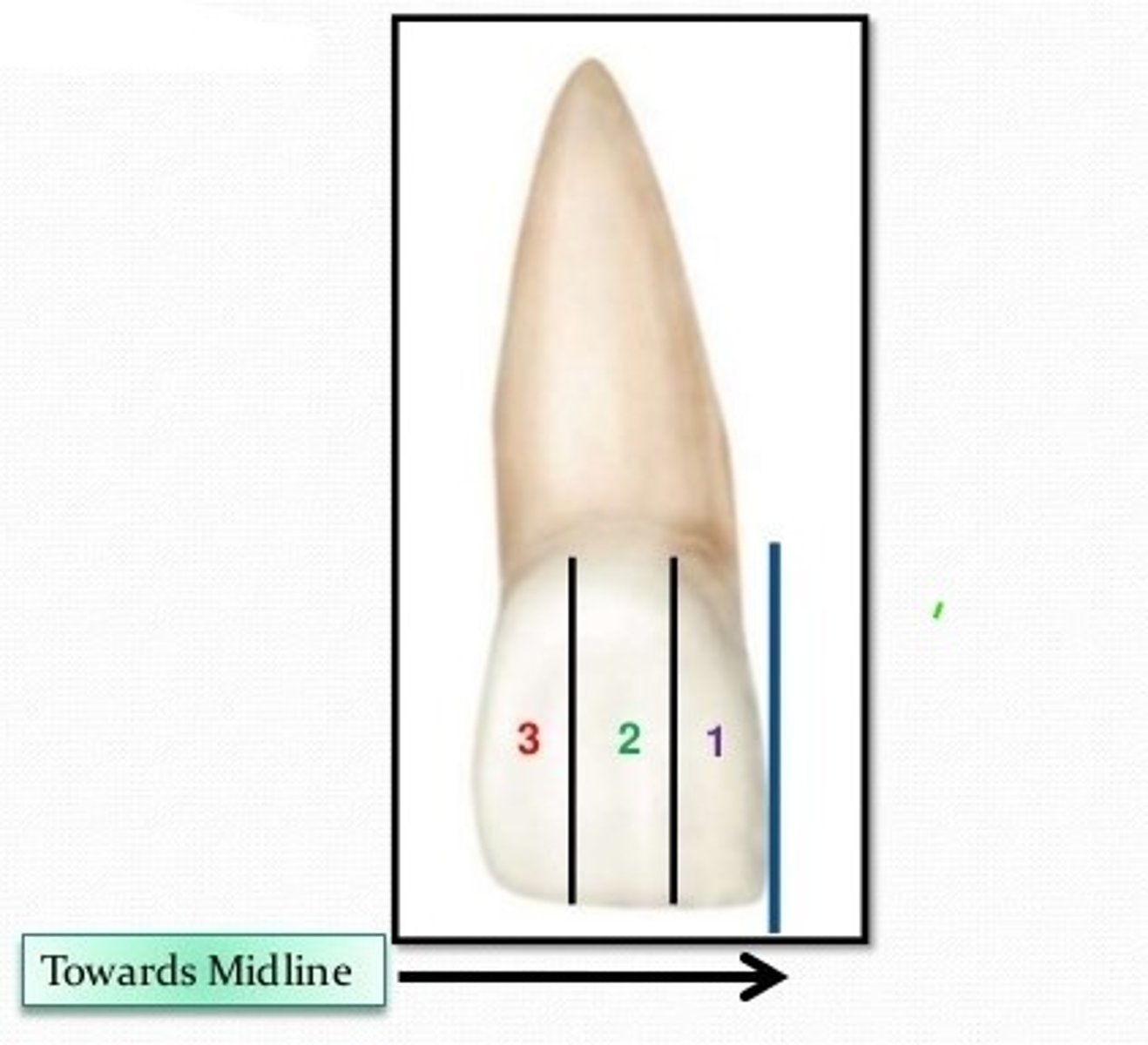
On incisors, the number of lobes on the FACIAL surface (which is the same as the number of mamelons on the incisal surface) is:
three
The borders of the lingual fossa of the maxillary lateral incisor are the cingulum, the distal marginal ridge, the incisal edge or ridge, and the _____________.
mesial marginal ridge.
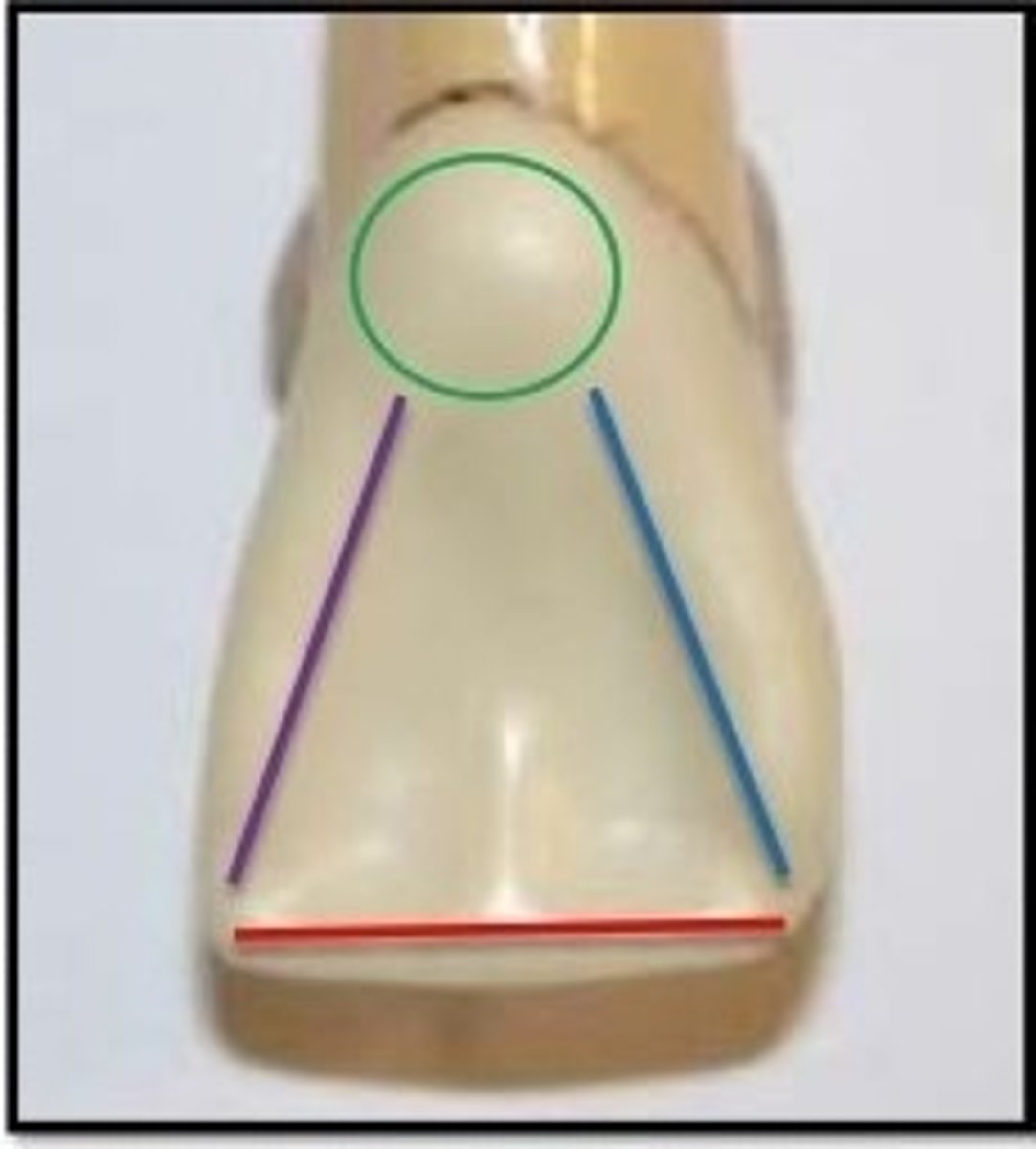
The spaces formed around the point of contact between proximal surfaces of adjacent teeth are called _________.
embrasures

True or false? The CEJ curves more on the mesial of the tooth than on the distal.
True
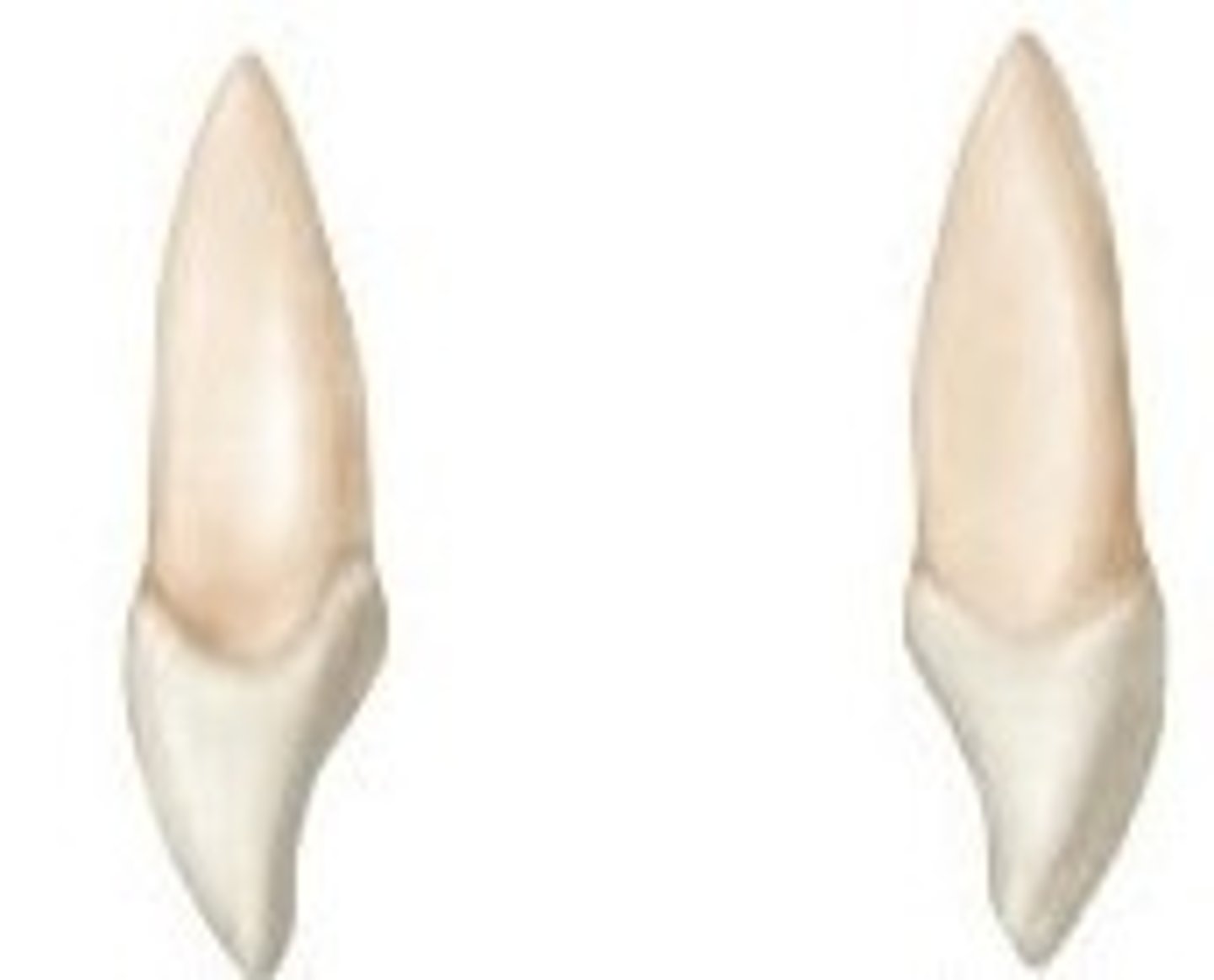
True or false? The facial height of contour of tooth #8 is located in the middle third of the crown.
False
What is the correct order of anatomic landmarks of a tooth with two roots beginning at the cementoenamel junction and moving toward the root tip?
Cervix, trunk, furcation, apex
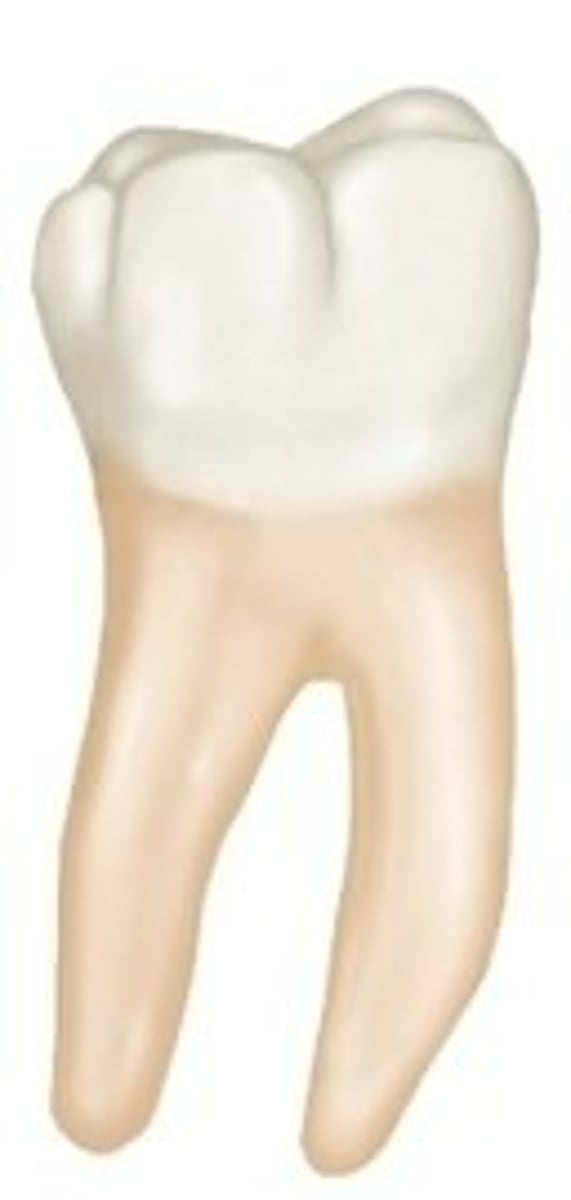
When referring to mandibular anterior tooth surfaces, what is another term for facial surfaces?
Labial
When referring to maxillary tooth surfaces, what term is the same as lingual?
Palatal
Which tissue makes up the majority of the bulk of a tooth?
Dentin
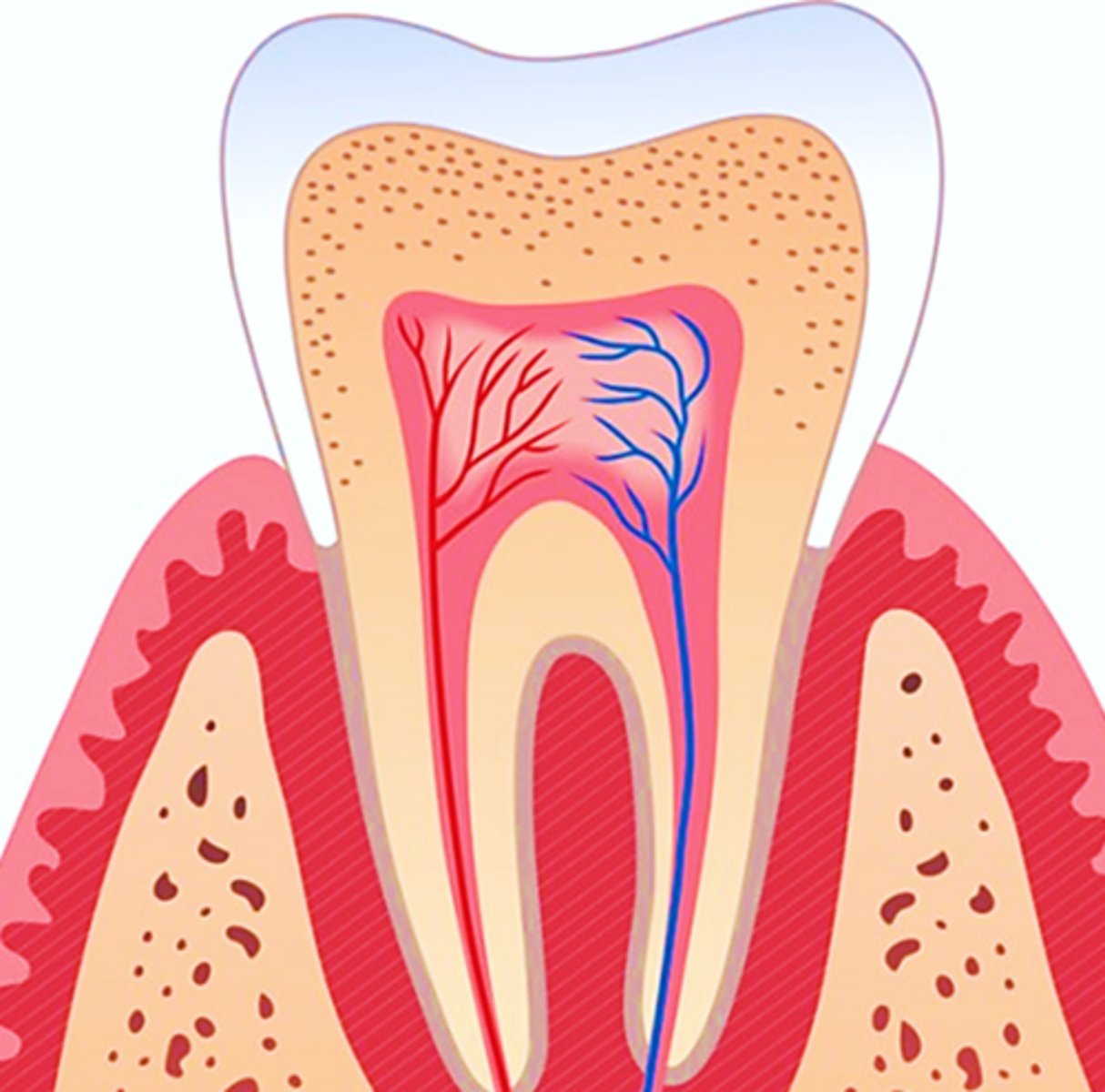
Which tooth crowns have the LINGUAL crest of curvature (height of contour) located in the middle third? (Read all choices before selecting the one best answer.)
All posterior teeth only
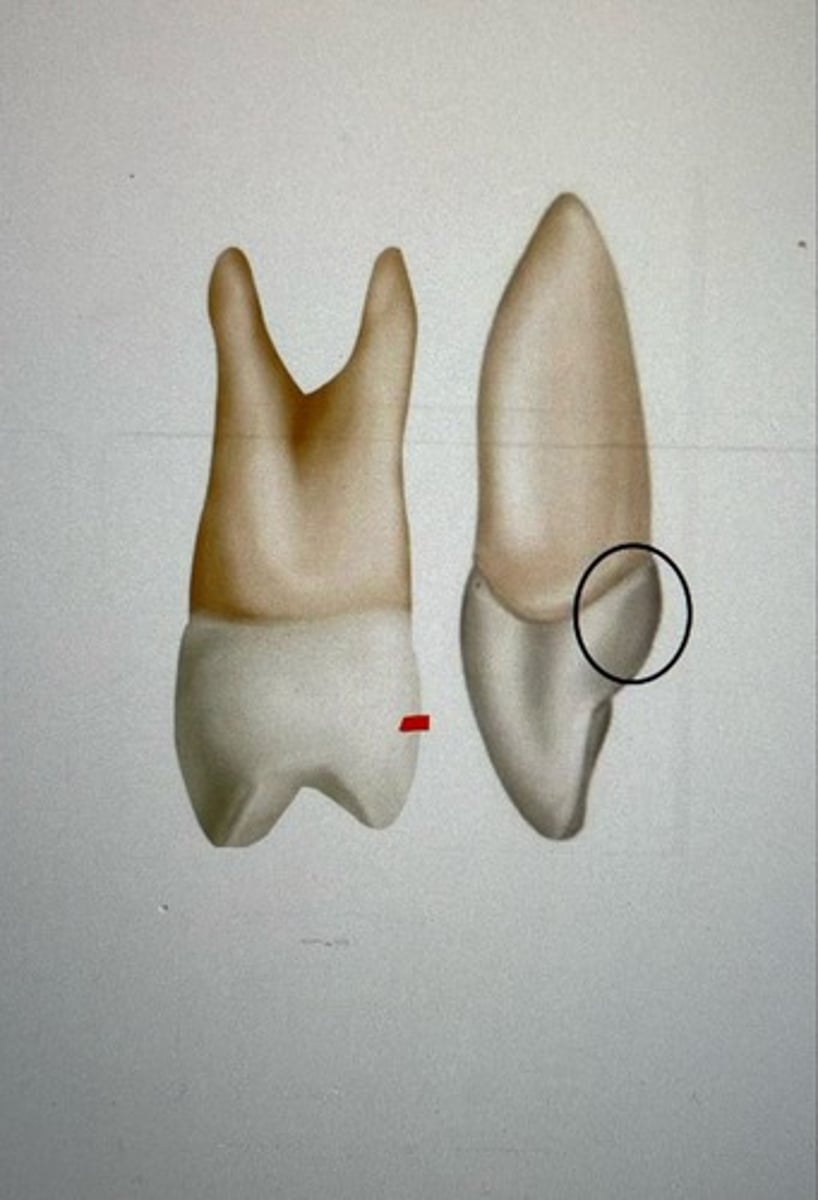
Which tooth structure is hardest (most calcified)?
Enamel
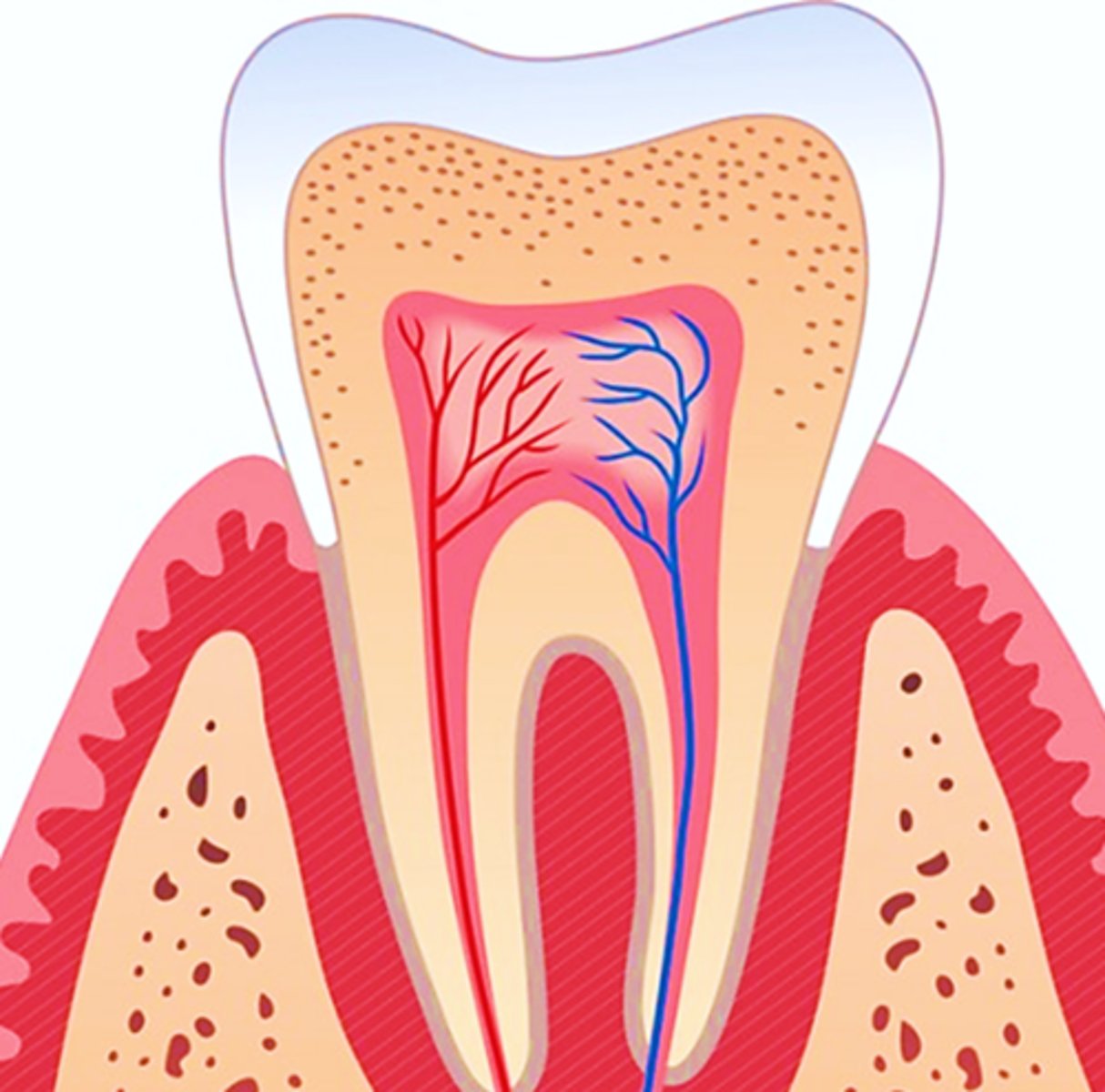
__________ are rounded incisal extensions of the labial lobes found on newly erupted or unworn permanent incisor teeth.
mamelons
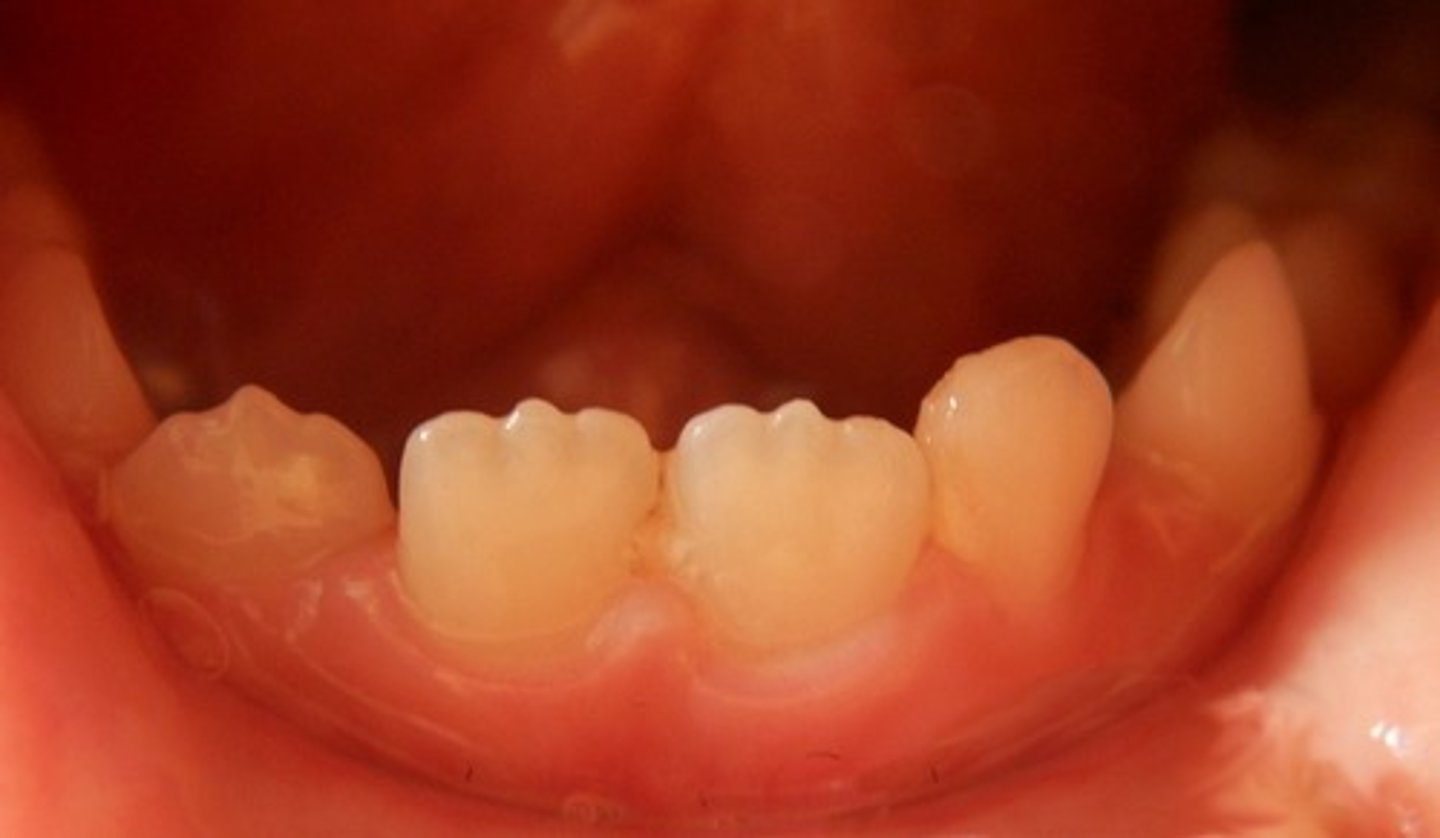
Compared to permanent maxillary lateral incisors, maxillary central incisors are more likely to exhibit:
(what do maxillary central incisors have that maxillary lateral incisors don't?
A root that is almost the same length as the crown
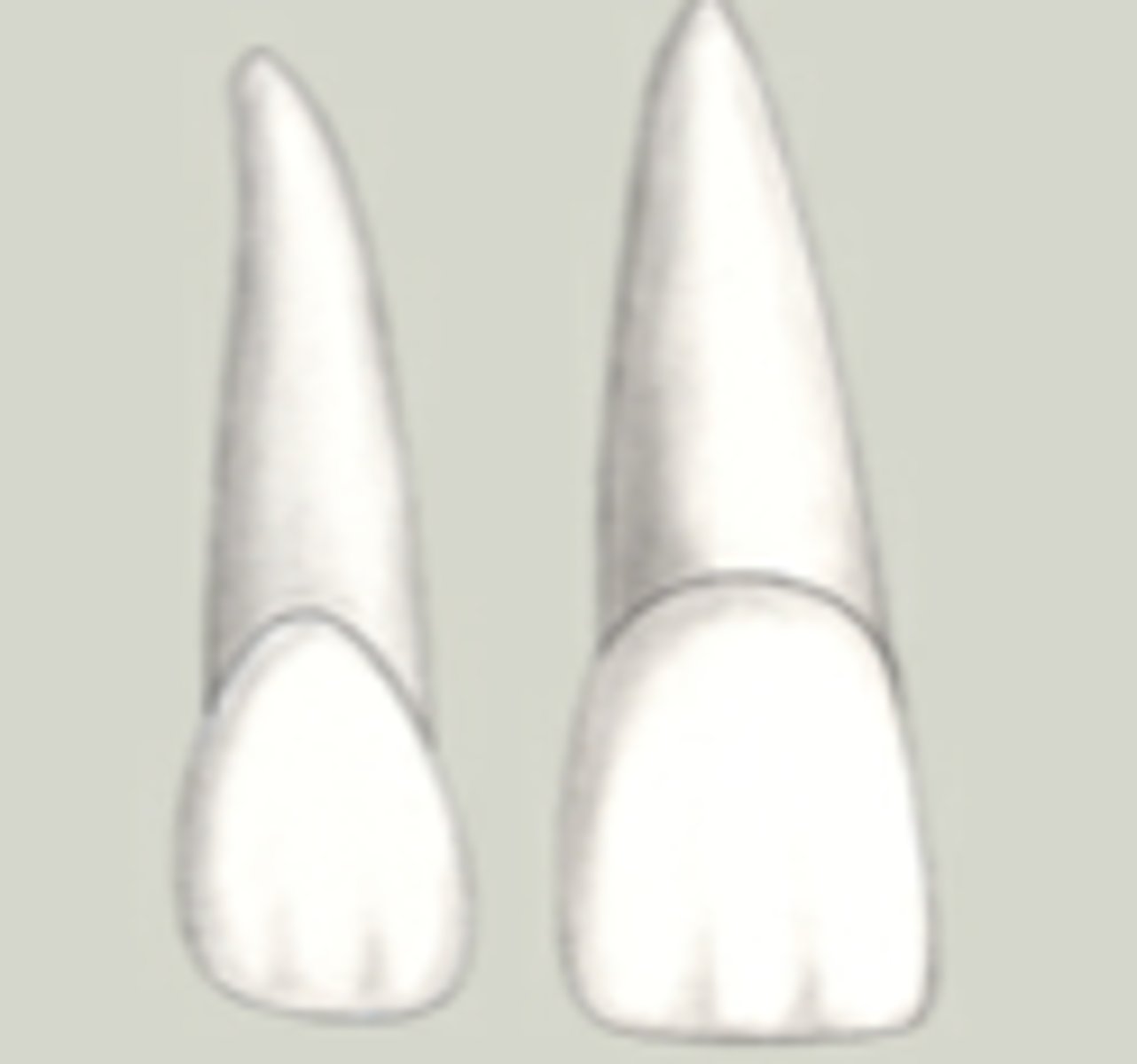
The marginal ridges and cingulum of the permanent maxillary central incisor are _______ than those of the permanent maxillary lateral incisor.
Less prominent
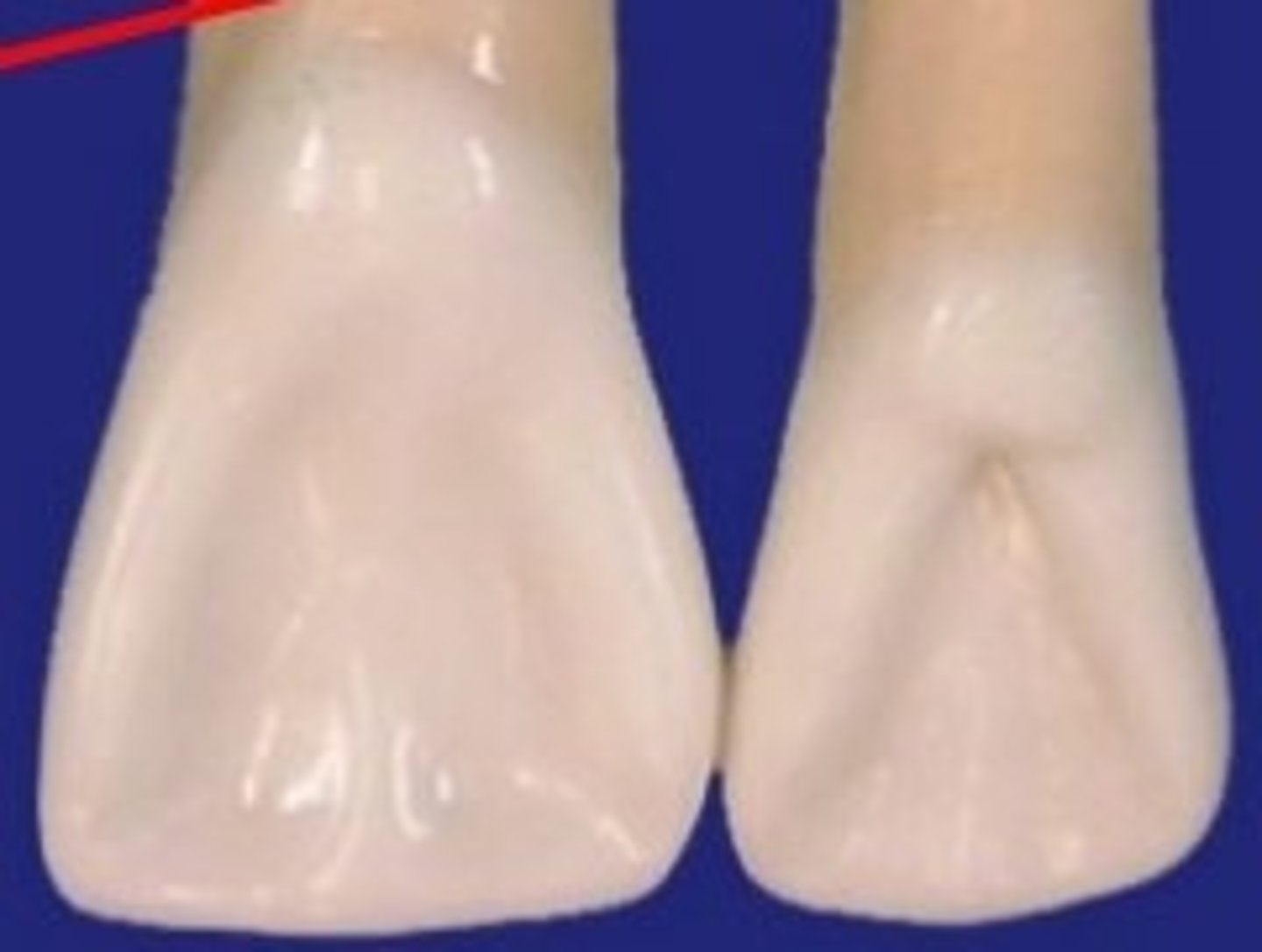
When viewed from the facial aspect, the mandibular central incisor is _______ mandibular lateral incisor.
Narrower
Which of the following incisors is symmetrical?
Mandibular central incisor
Which incisor is the smallest tooth in the mouth?
Mandibular central incisor
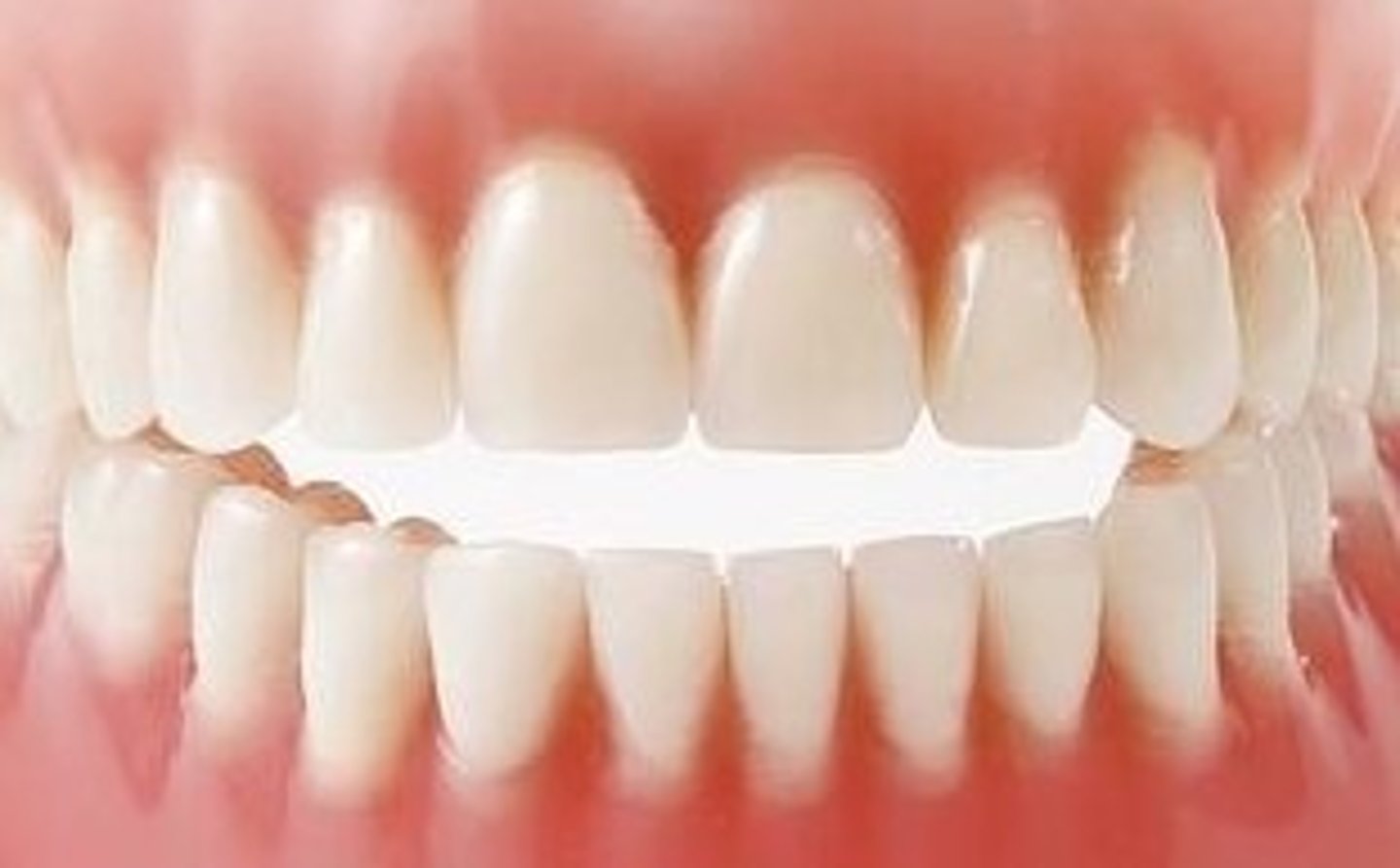
Which incisor is normally the widest (mesiodistally)?
Maxillary central incisor
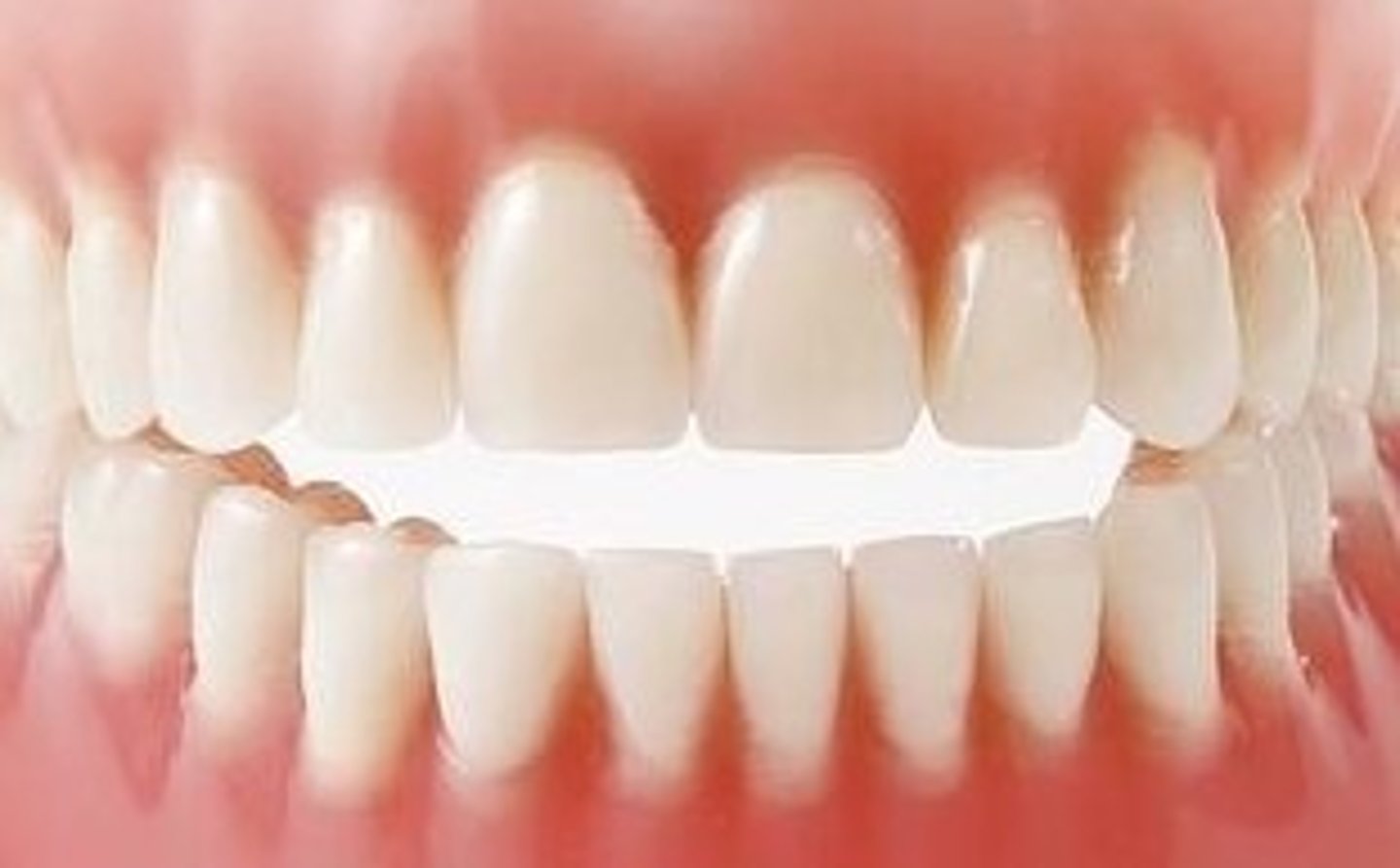
Which of the following characteristics is normally seen on ALL types of permanent incisors?
The labial height of the contour is in the cervical third
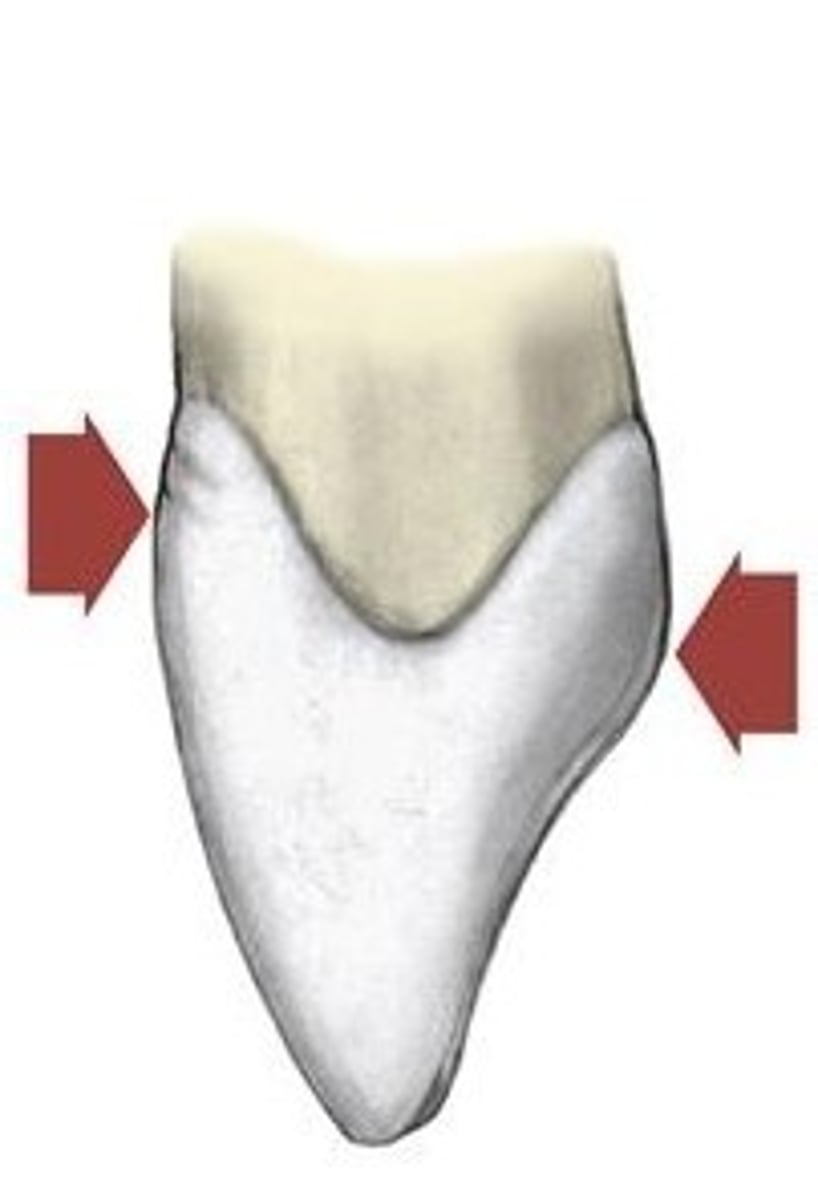
Which statement is true regarding all lateral incisors (maxillary and mandibular)
The mesioincisal angles are more square than the distoincisal angles (more rounded)
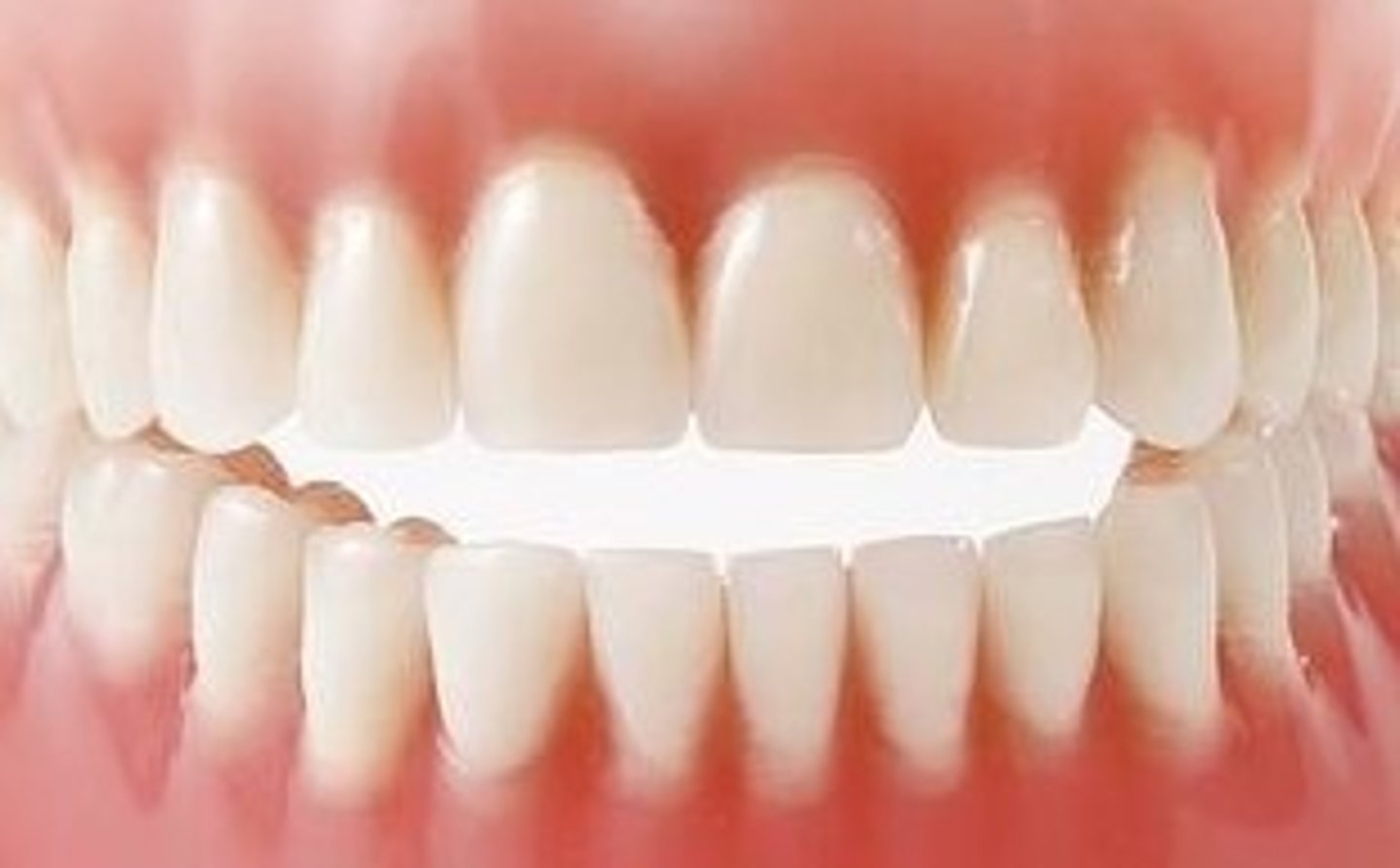
Which tooth has the shortest root relative to its crown?
(smallest crown to root ratio)
Maxillary central incisor
The crown of the permanent maxillary canine is ________the crown of the permanent mandibular canine.
shorter than
True or false? A distinguishing characteristic of mandibular canines is the relatively straight line of the mesial outline, compared to the distal outline.
True

Which tooth has a distinct mesial and distal fossa with a pit that can have 'snake eye' fillings?
#28 mandibular right first premolar
True or false? On the permanent maxillary canine, the mesial cusp ridge is longer than the distal cusp ridge.
False
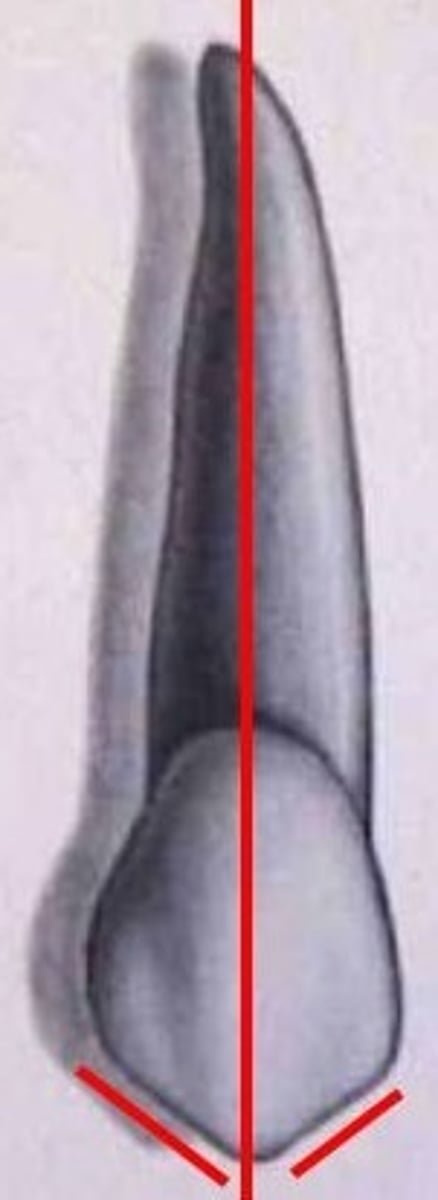
A Y-shaped occlusal groove pattern is characteristic of a:
Mandibular second premolar
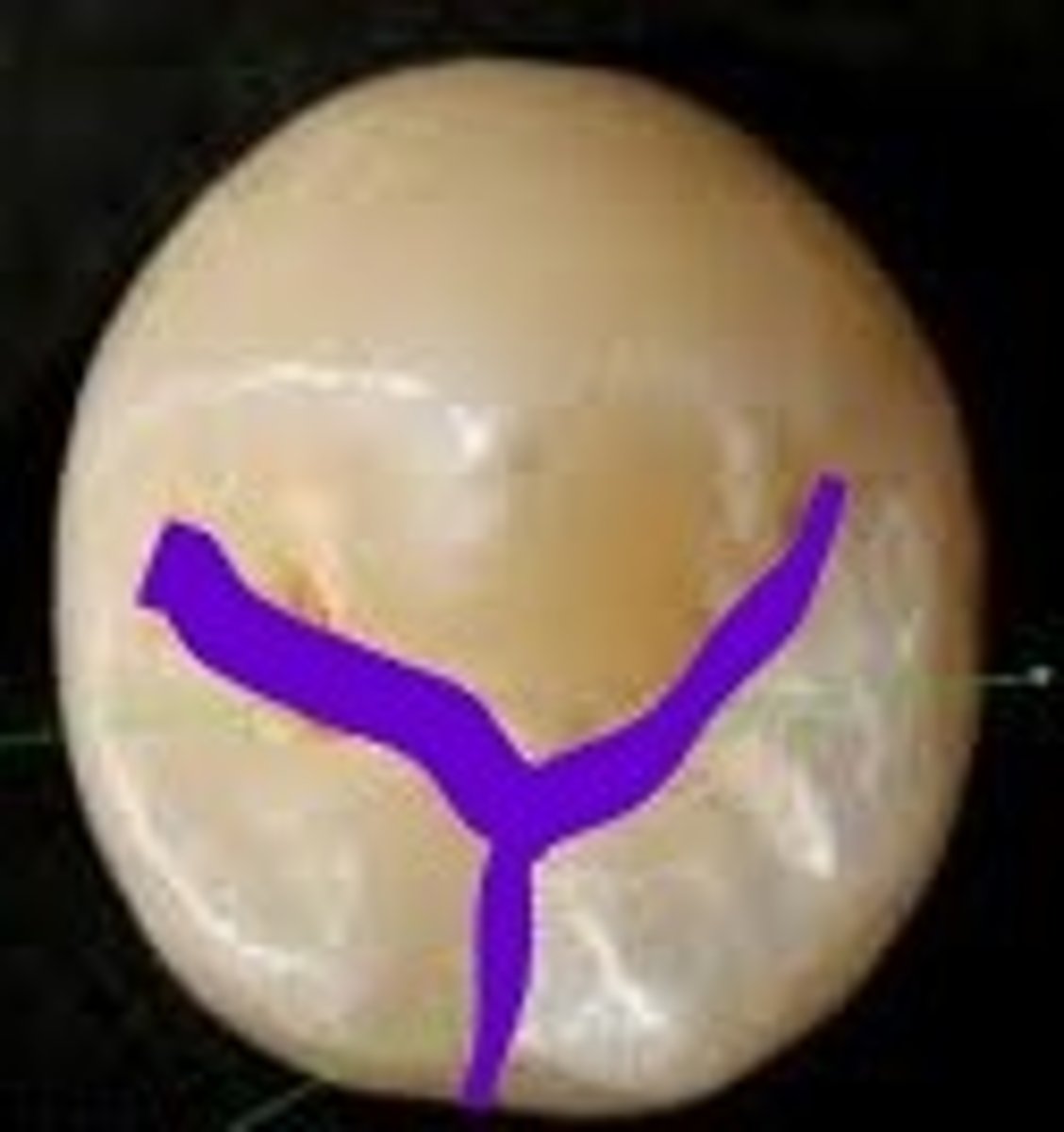
If a mandibular second premolar has three cusps, what are they called?
Mesiolingual, distolingual, and buccal
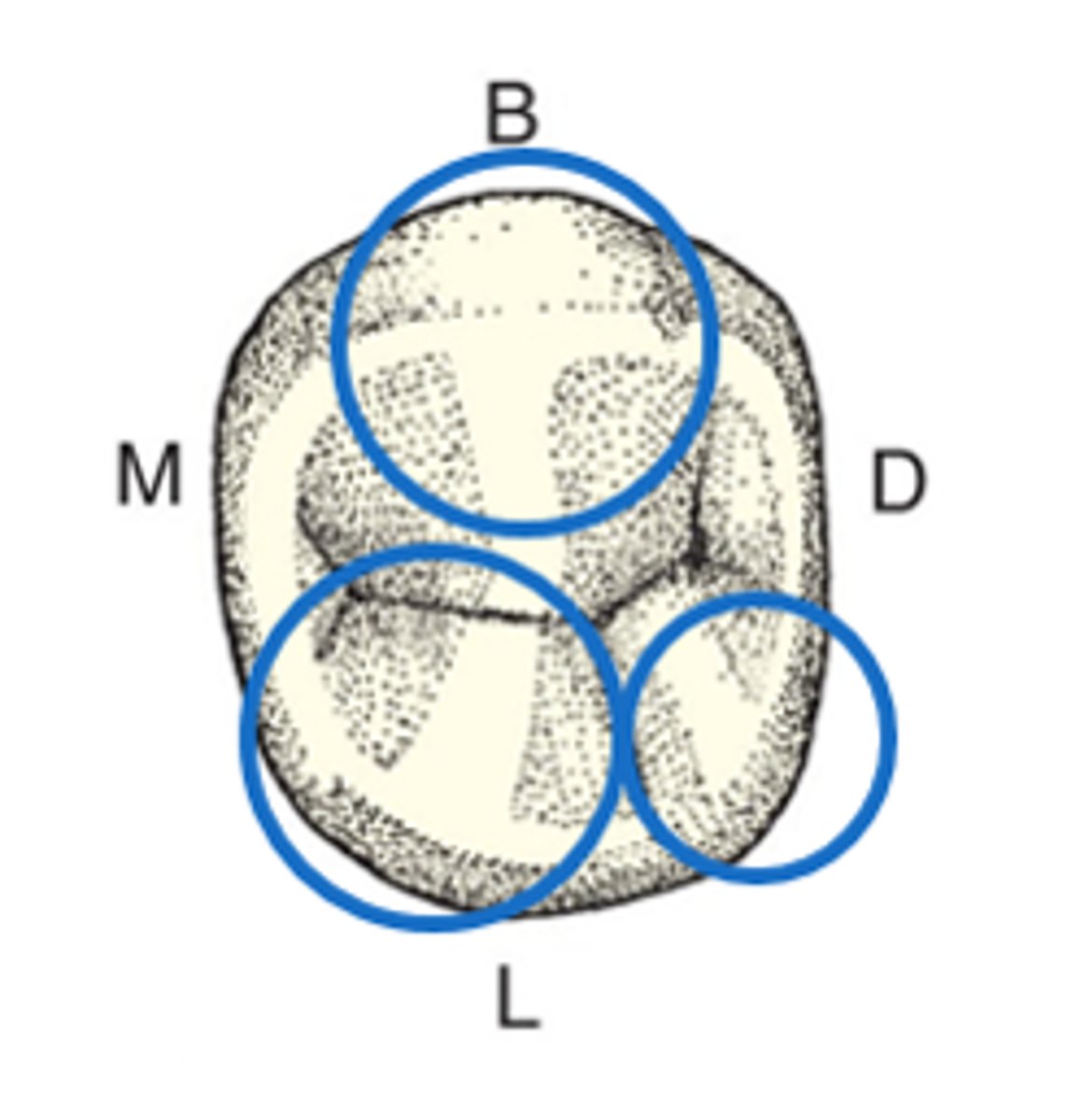
Which premolar has a pronounced concavity (fossa) on the mesial side of the crown?
Maxillary first premolar
The cusp ridges form the buccal and lingual sides of the occlusal table, and the __________ make up the mesial and distal boundaries of the occlusal table.
marginal ridges
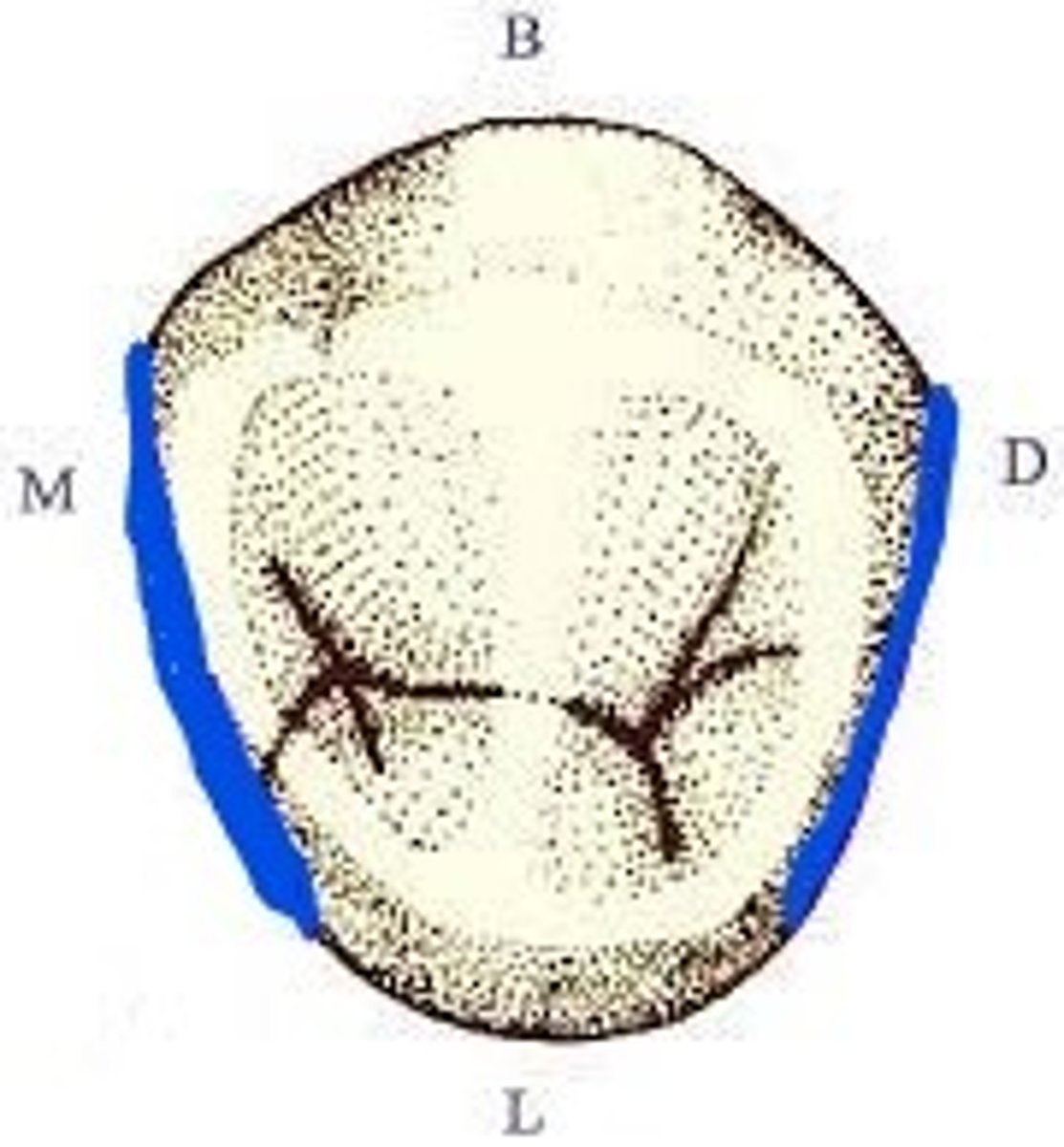
The only single-rooted tooth to have three cusps is the ___________________.
mandibular second premolar.
True or false? Multiple supplementary grooves often are found on a maxillary second premolar.
True
When compared to other premolars, which of the following characteristics is unique to a mandibular first premolar?
There is likely to be a mesiolingual groove crossing onto the mesiolingual surface.
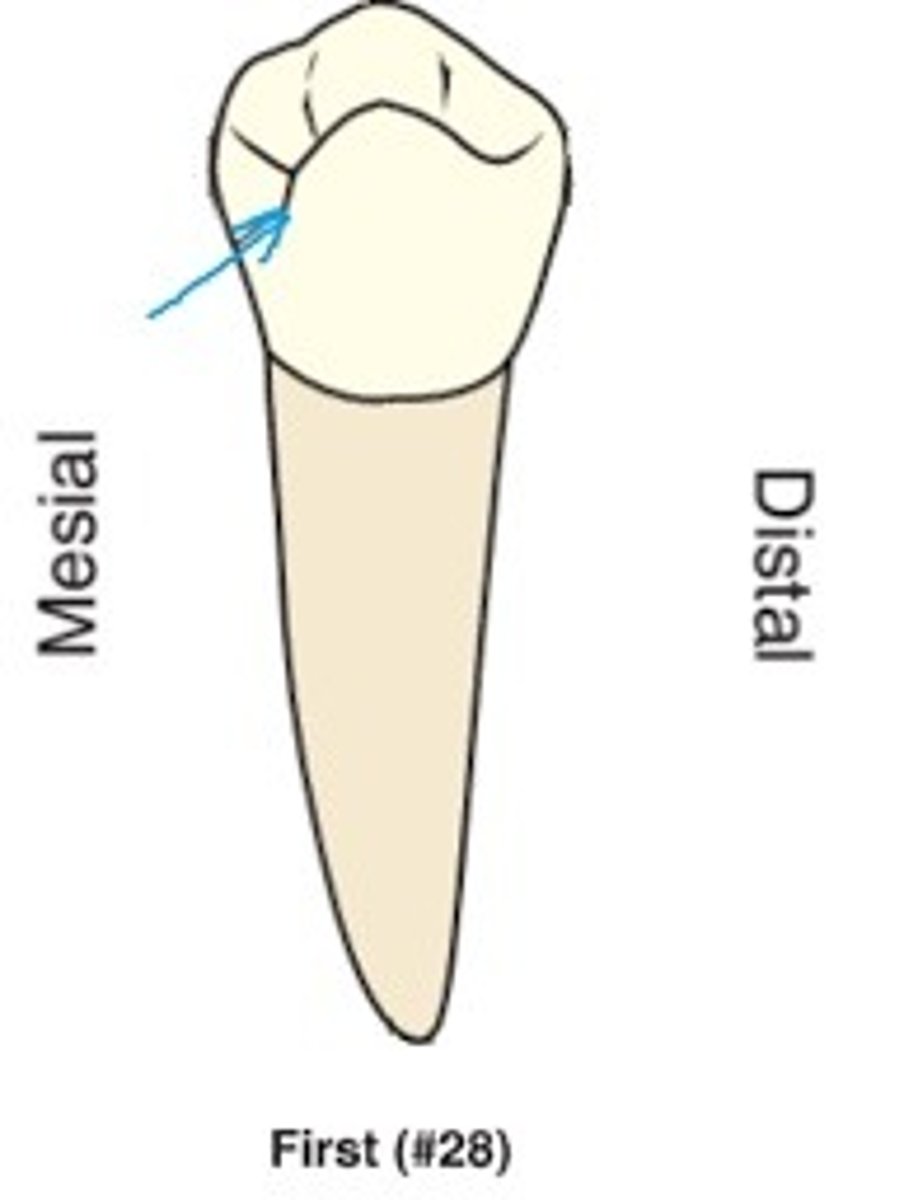
Which of the following characteristics is NOT true about a maxillary first premolar?
The short lingual cusp is non-functional.
Which premolar has a deep mesial root depression?
Maxillary first premolar.
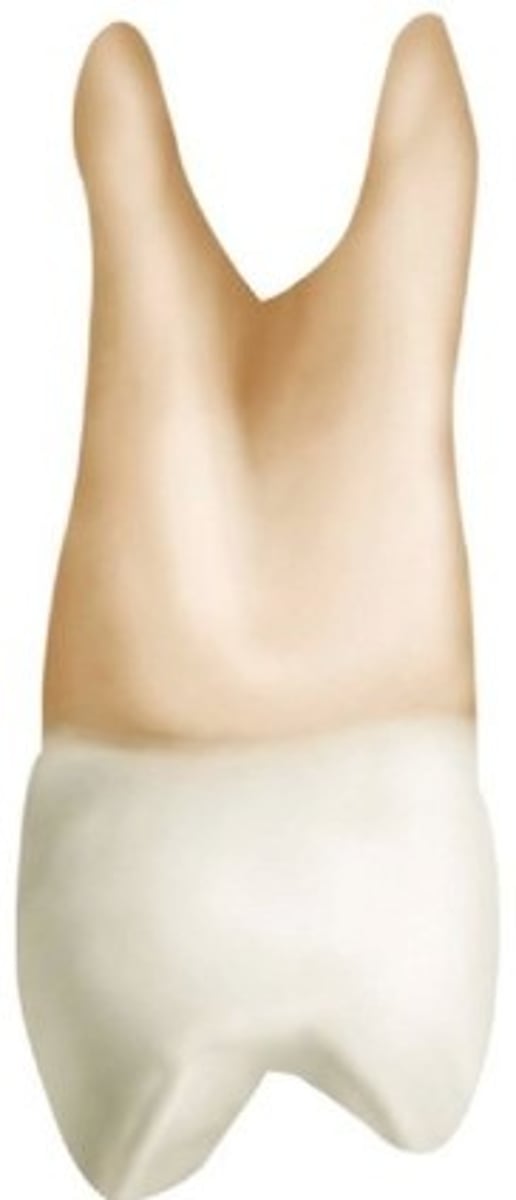
Which premolar has a non-functional lingual cusp (due to the difference in the height of the two cusps)?
Mandibular first premolar
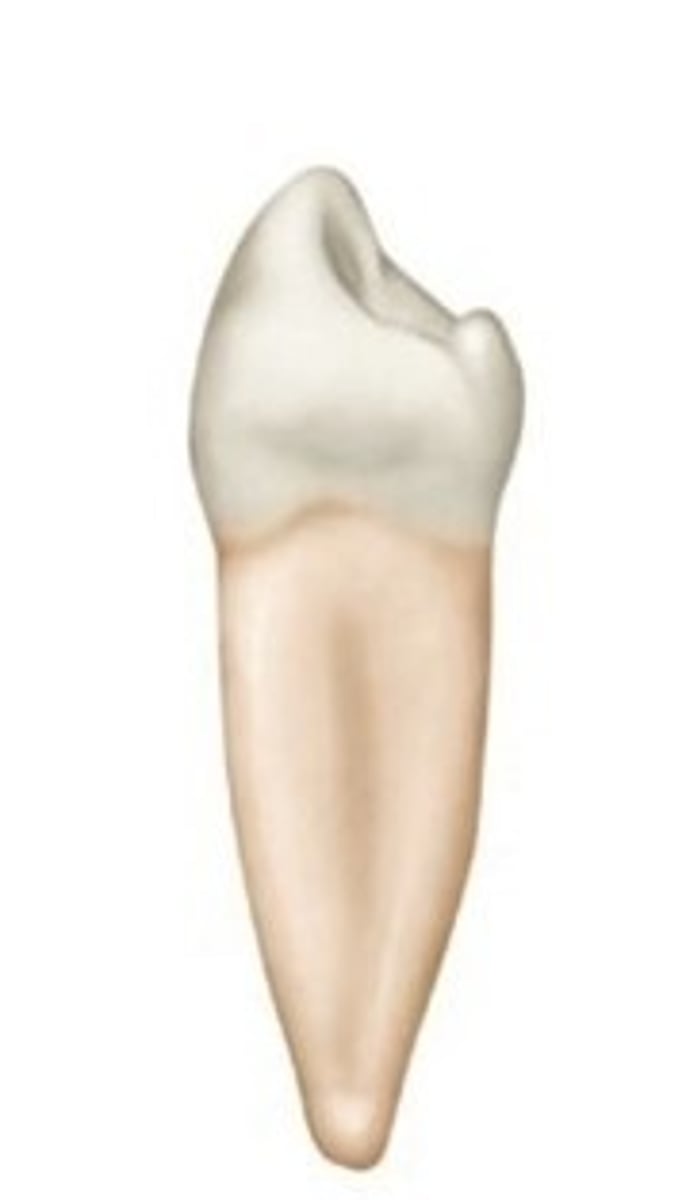
Which premolars are most likely to have three cusps and a lingual groove?
Mandibular second Premolars
Due to the four cusps being almost equal in size, the “+” groove pattern on the occlusal surface of this MOLAR identifies the tooth as the:
Mandibular second permanent molar.
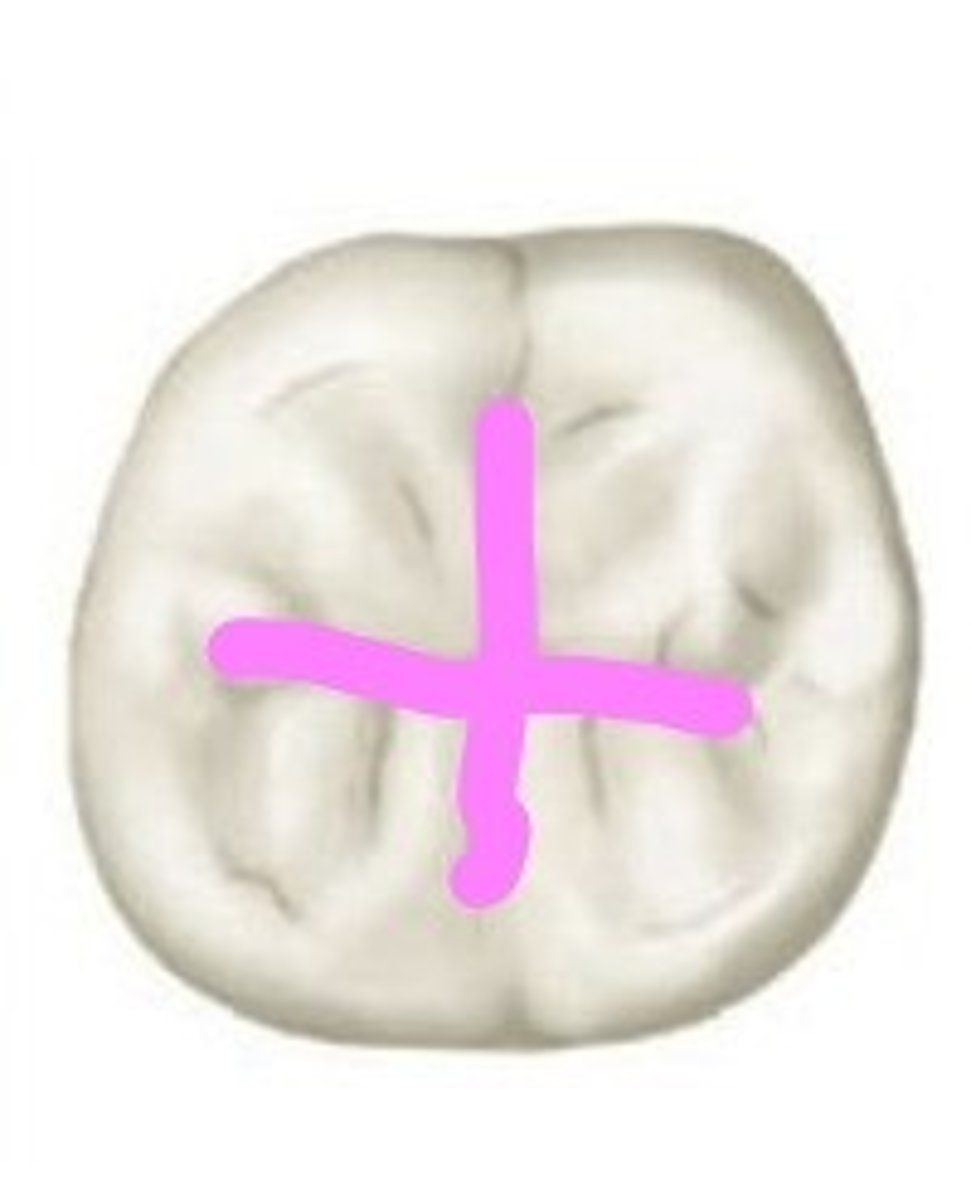
From which view is only one root visible on a mandibular first molar?
Mesial
If a permanent maxillary second molar has only three cusps, what are the three cusps called?
Mesiobuccal, distobuccal, and lingual
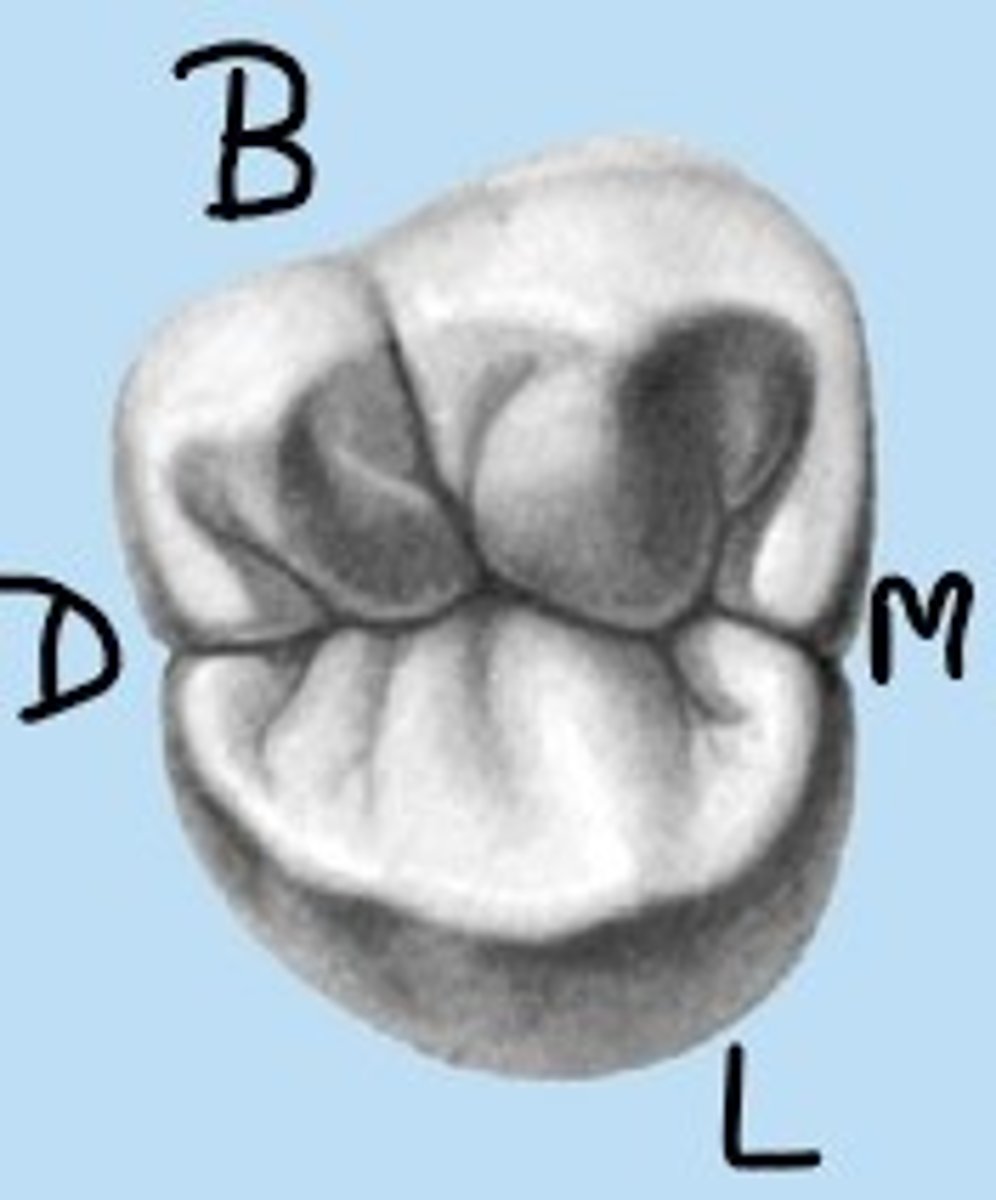
Name the two grooves found on the buccal surface of the mandibular first molars, mesiobuccal and ____________
distobuccal
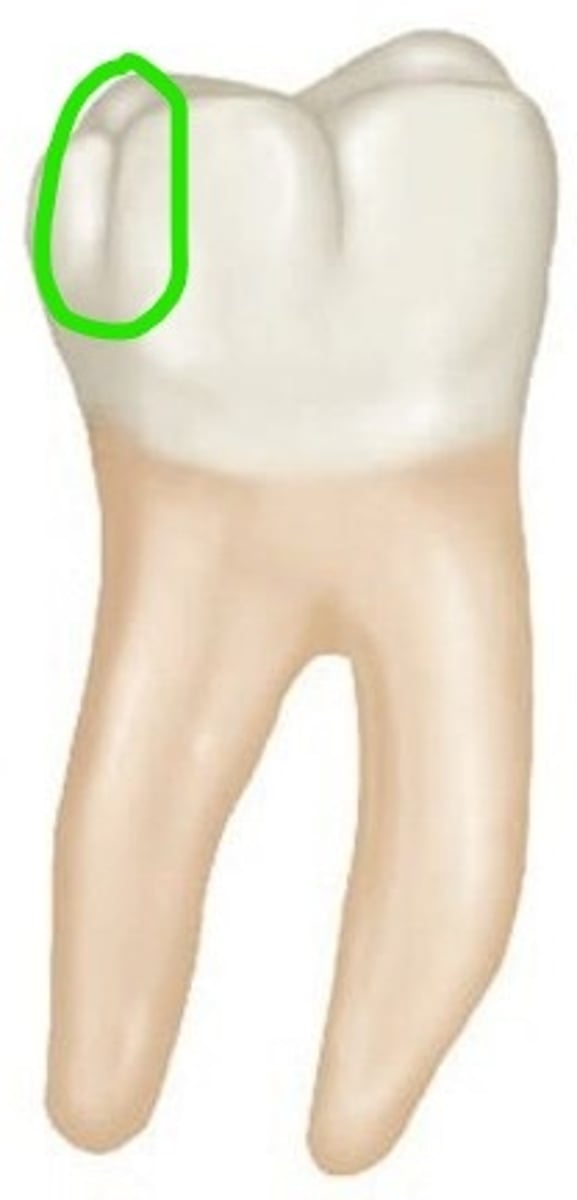
Of the following, which cusp is the smallest cusp on permanent maxillary molars (not including the Cusp of Carabelli)?
Distolingual.
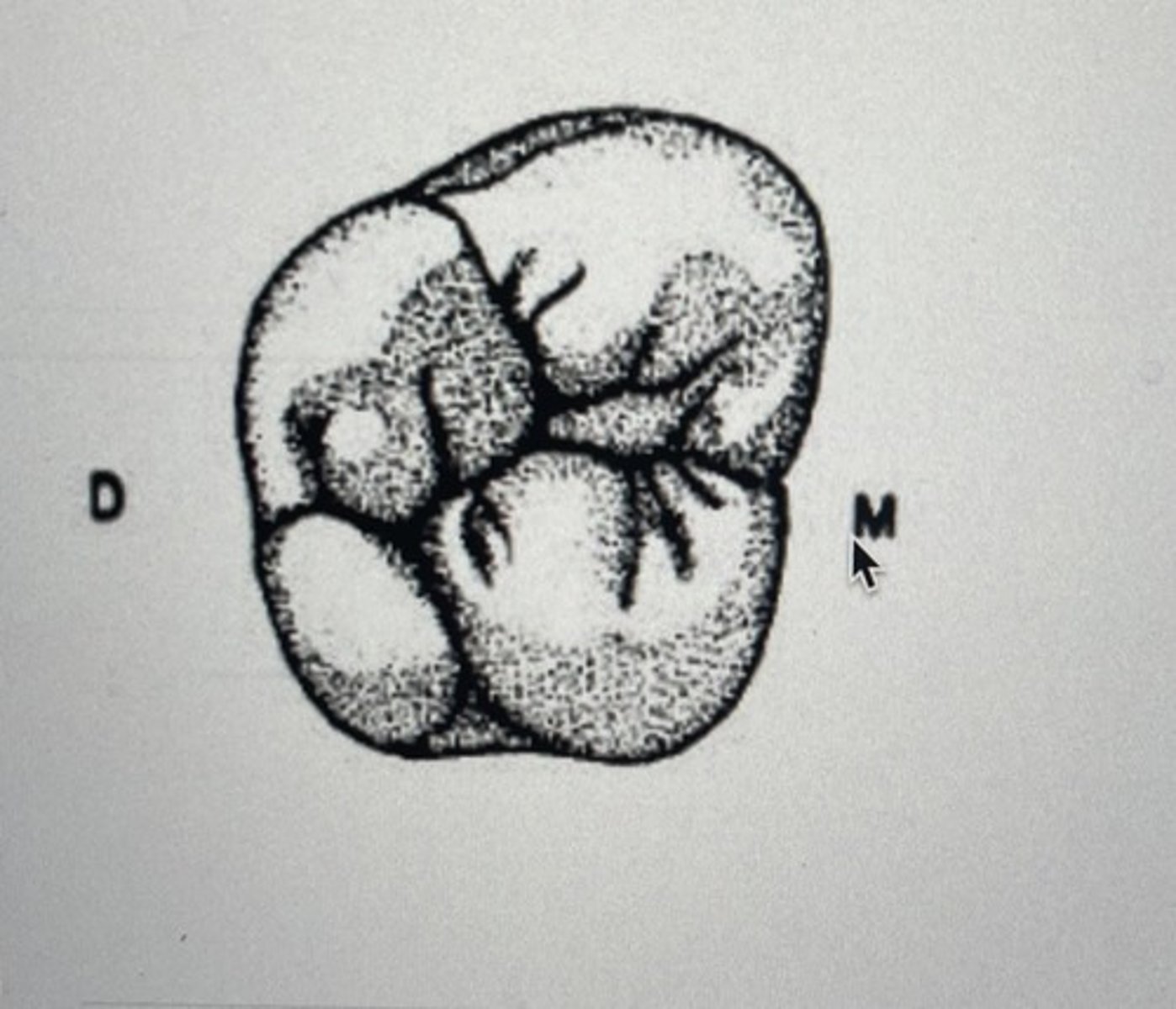
The ___________ cusp of the maxillary first molar is the largest cusp (carries the Cusp of Carabelli).
mesiolingual cusp.
The furcation of the mandibular molars may be seen from either a ______or lingual view.
buccal
True or false? A prominent ridge crossing the occlusal surface of the permanent maxillary first molar, (unique to maxillary molar teeth), is called the oblique ridge.
True
During most of their eighth year, children have how many teeth in their mouth (primary and secondary)?
24
During what age span are primary teeth in the process of erupting (emerging) into the mouth?
6 months to 2 years
How many non-succedaneous teeth are in the complete dentition?
12
Primary molars differ from permanent molars in that primary molars have:
Greater divergence of roots
The PERMANENT mandibular central incisor erupts at age:
6 to 7 years
How many roots does a primary maxillary first molar have?
three
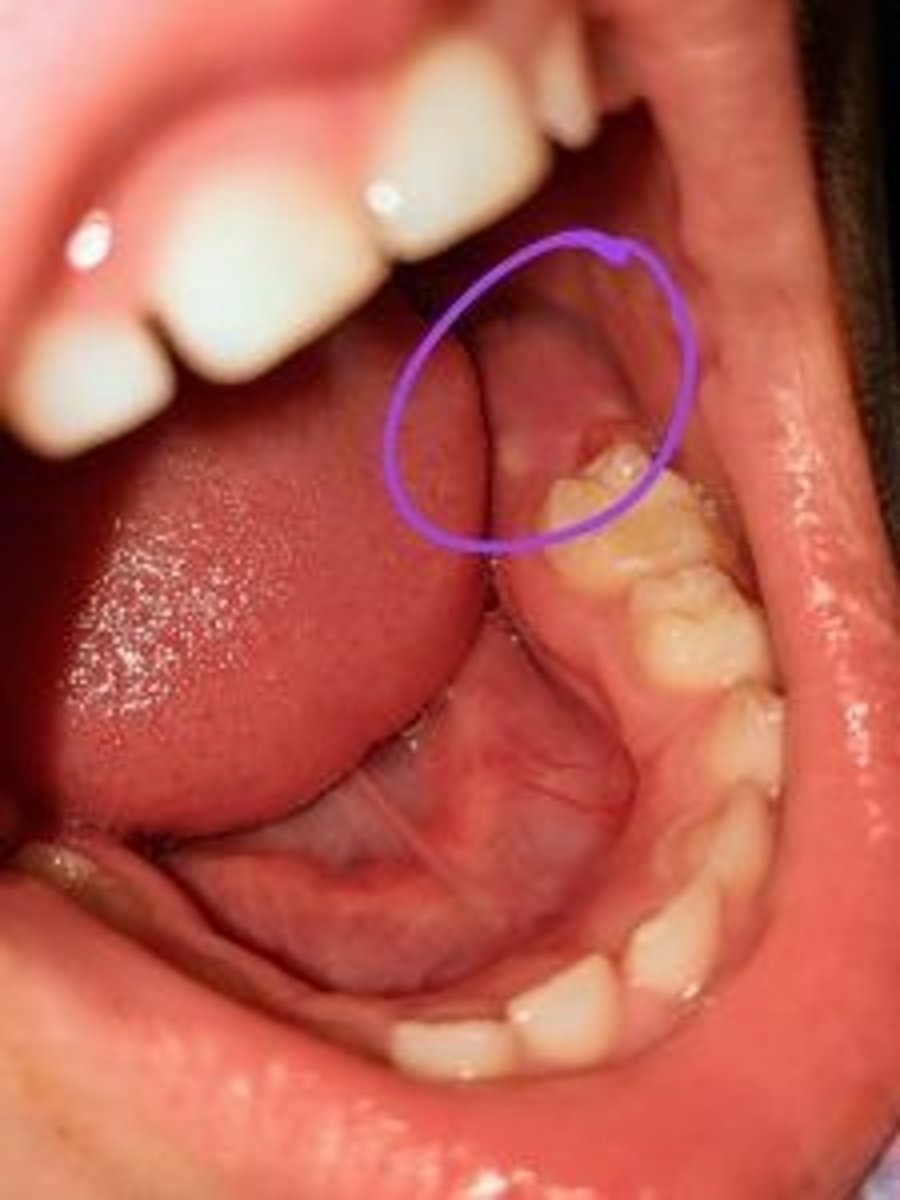
Tooth #19 forms within the mandible (prior to erupting) at which location?
Distal to the tooth "K"
Using the Universal number or letter, which tooth erupts in place of primary tooth "E"?
Tooth #8
What permanent tooth erupts into the space previously held by any of the primary second molars?
Second premolars
The maxillary anterior teeth are lingual to the mandibular anterior teeth
Choose the best description for anterior crossbite.
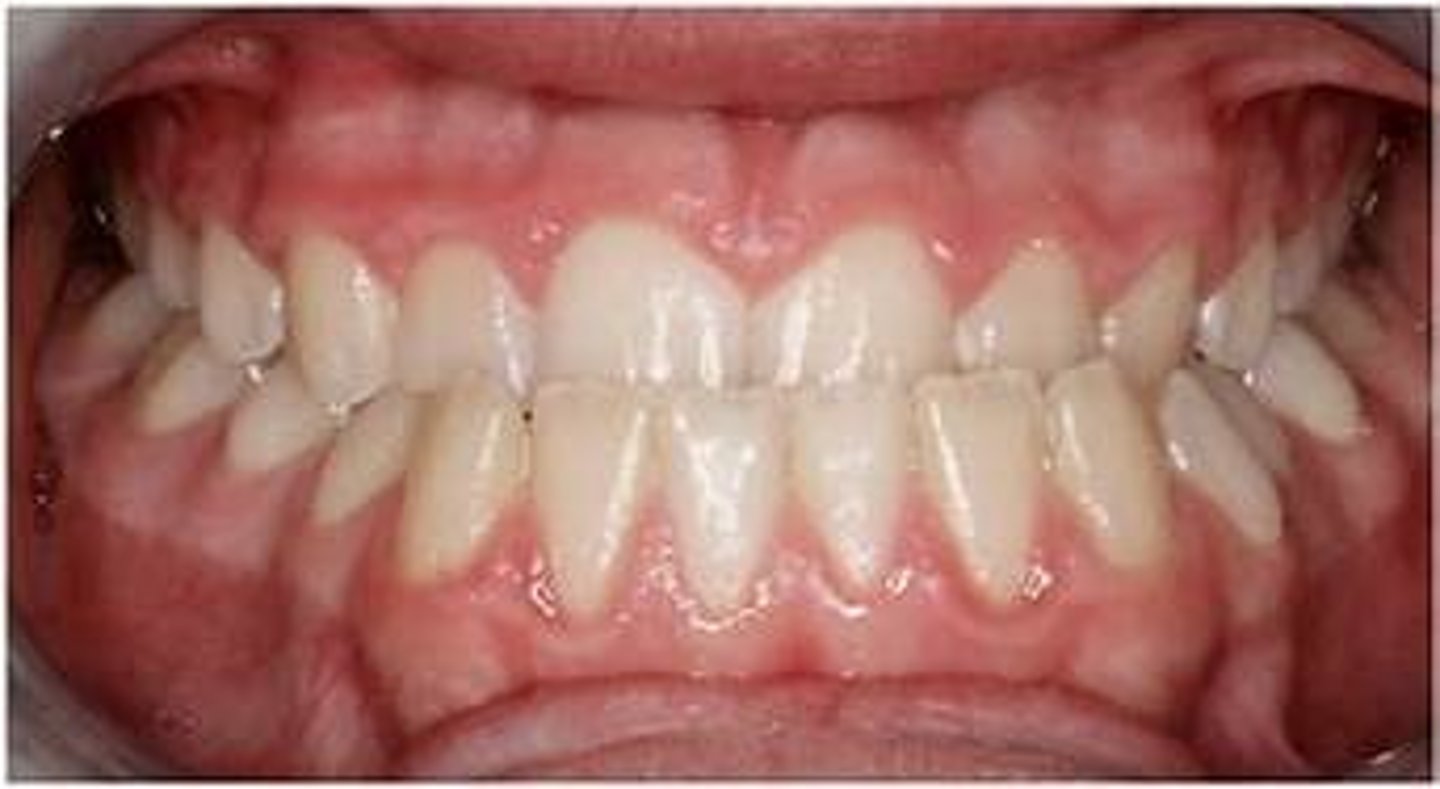
When the mesiobuccal cusp of the maxillary first molar sits even with the mesiobuccal groove of the mandibular first molar it is:
Class I occlusion
Posterior cross bite
When the mandibular posterior teeth sit more to the buccal than the maxillary posterior teeth, it is termed:
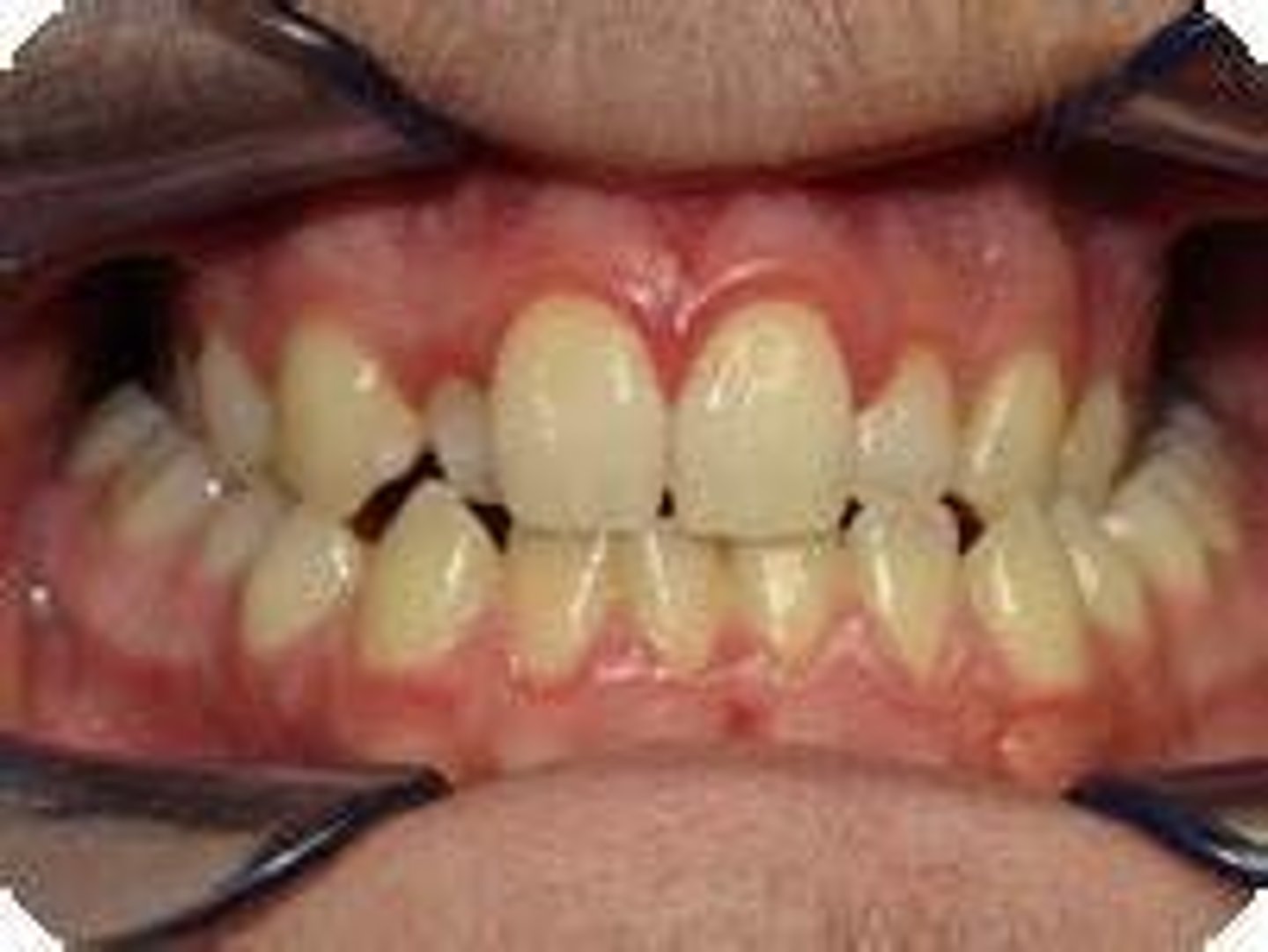
In class II malocclusion, the profile is retrognathic, meaning the lower jaw sits back further than in class I occlusion.
True
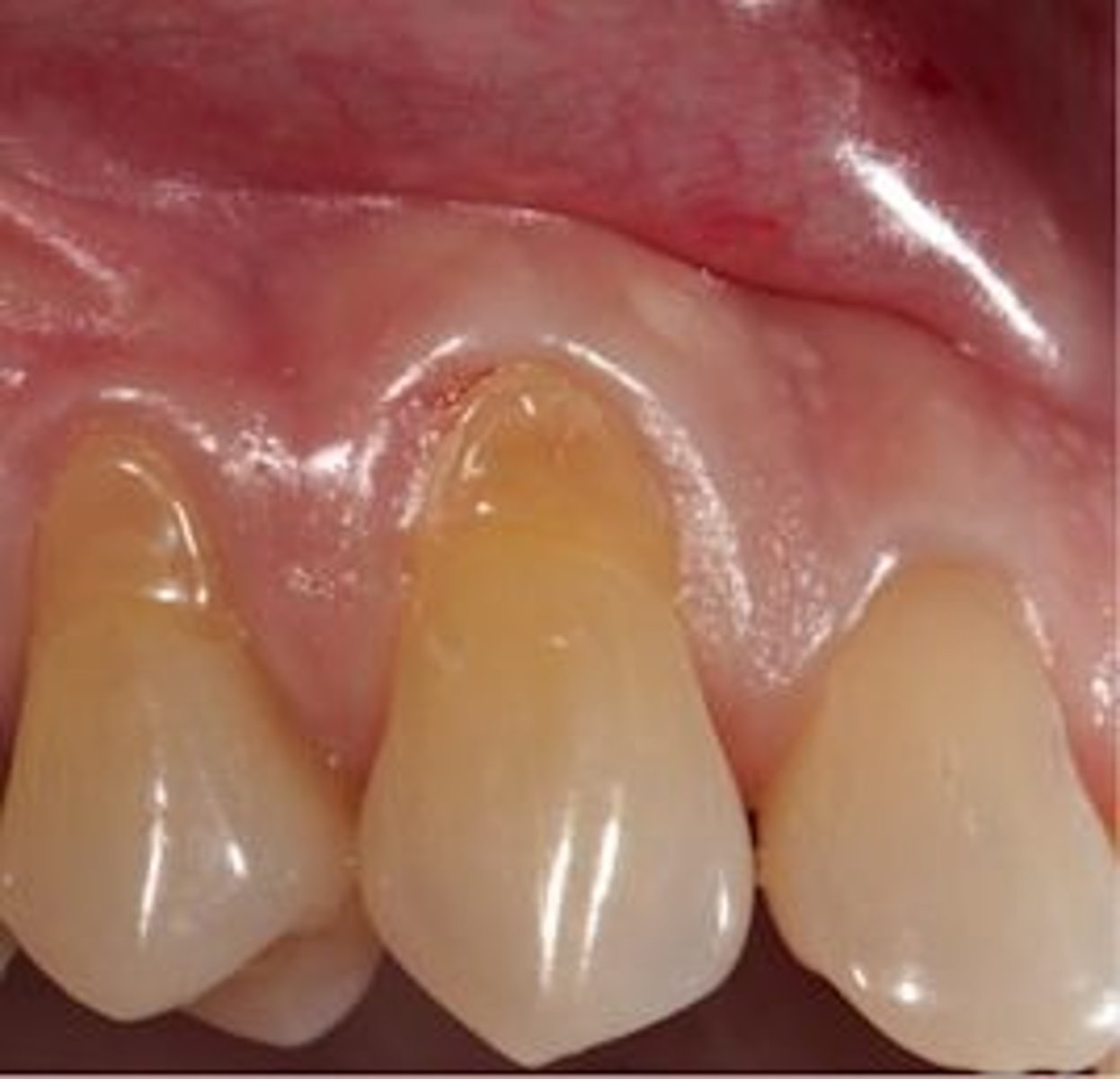
Loss of tooth structure due to mechanical forces (toothbrushing):
Abrasion
When examining a large group of people, what is the most frequent location where extra (supernumerary) permanent teeth may be found?
Maxillary incisor area
Which two teeth are most likely to be congenitally missing?
#1 & #16 3rd molars
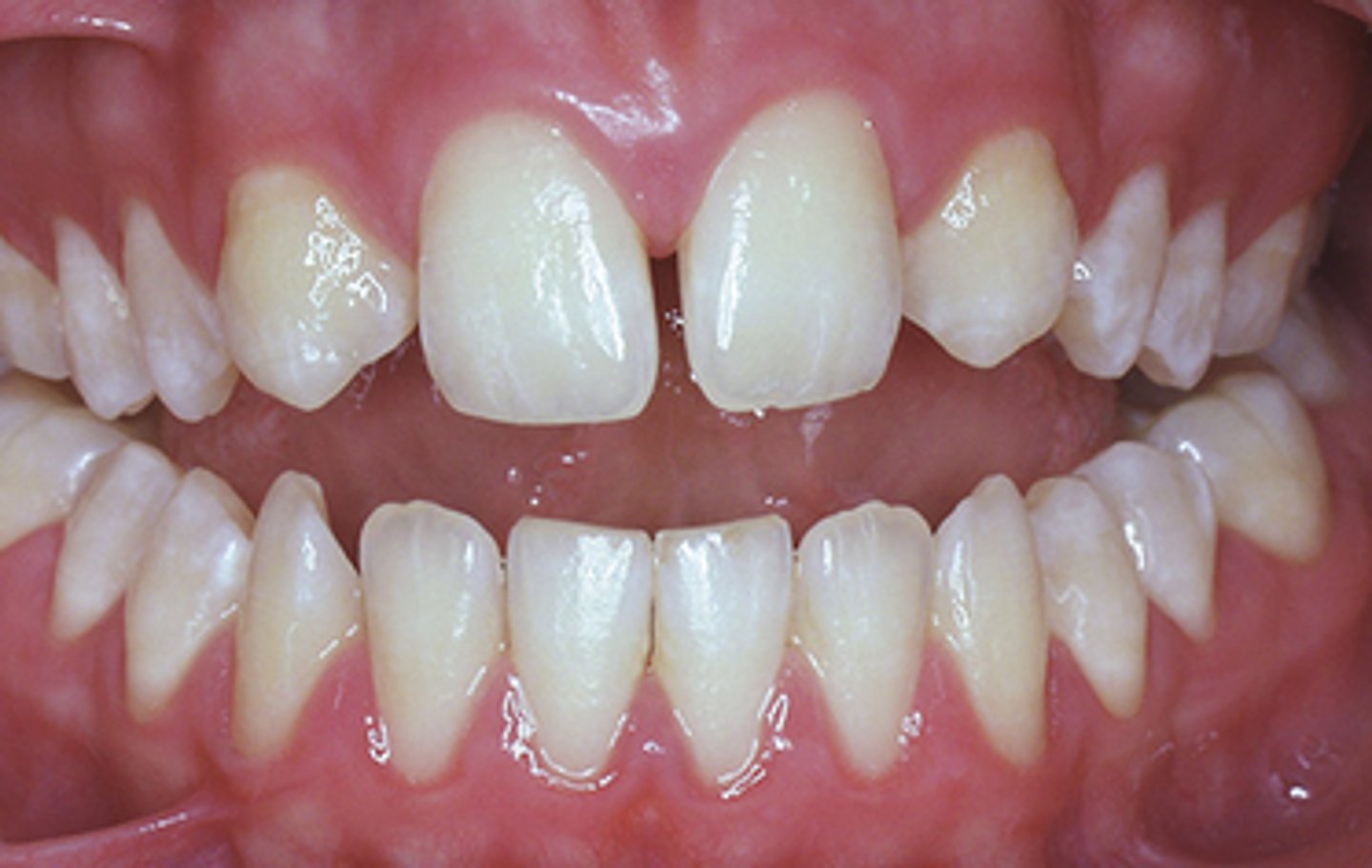
Tooth wear caused by tooth-to-tooth contact:
Attrition
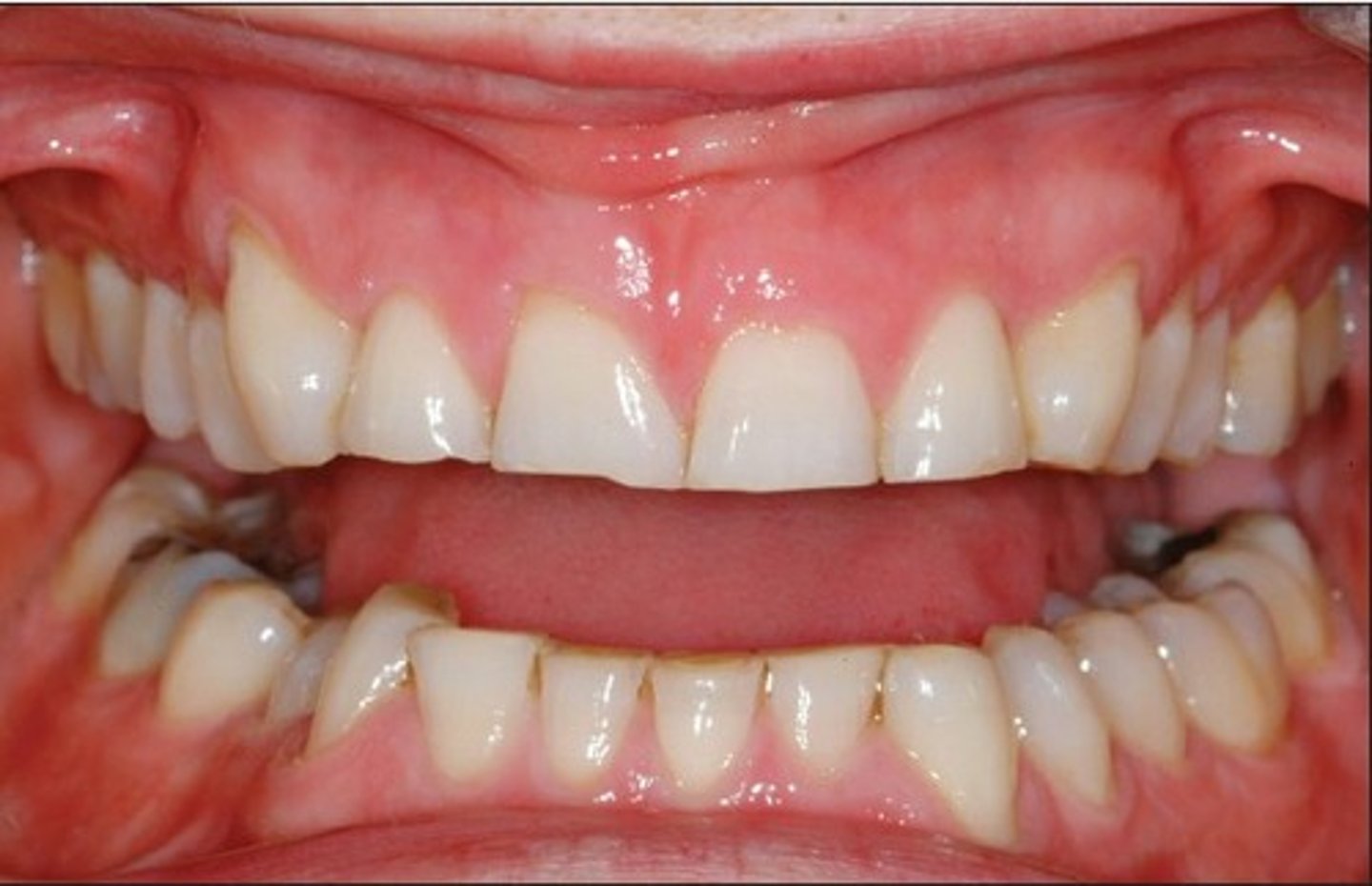
How many teeth should be visible in the mouth of a 3-year-old (complete primary dentition)?
20 Primary teeth
A cone shaped mass found on the occlusal surface of posterior teeth and that is made of ridges is called a _____.
Cusp
A transverse ridge is made up of which two ridges?
Two triangular ridges
How many molars are there in one quadrant of a normal adult human dentition?
Three
Which primary tooth is most unique in shape and resembles no other tooth?
#S
How many teeth in a complete adult dentition?
32 teeth
Using the Universal Numbering System, what tooth is #13?
Maxillary left second premolar
Using the Universal Numbering System, what tooth is the permanent mandibular left lateral incisor?
tooth #23
Using the Universal Numbering System, what teeth are the maxillary central incisors?
Tooth #s 8 & 9
Using the Universal Numbering System for primary dentition, which teeth are the maxillary central incisors?
E & F
Using the Universal Numbering System, what teeth numbers are the 3rd molars (wisdom teeth)?
# 1, 16, 17, 32
At approximately what age do permanent maxillary canines erupt?
11-12 years old
Which tooth replaces the primary mandibular right first molar (tooth "S")?
Tooth 28
How many premolars are in the permanent dentition?
Eight